Beautiful scenery, chocolate, craft beer, alpine activities, and a European feel make Bariloche a unique city to explore during your visit to Argentina.
After exploring El Calafate, Argentina and Torres del Paine, Chile, it was time to catch a flight north to another beautiful destination in Patagonia called San Carlos de Bariloche, or Bariloche for short. If you’re a skier, then perhaps you’ve heard of the place, since it happens to be the largest ski resort in South America. But if skiing is not your jam, or if happen to be visiting outside of ski season, Bariloche is still a great place to visit. There are lots of hiking and water sport options for the active crowd, and opportunities to indulge in chocolate and craft beer, learning about the city’s German influence, or relaxing while gazing out at spectacular views. There’s something for everyone in Bariloche.
Table of Contents
A Brief Overview of San Carlos de Bariloche
Founded in 1902, Bariloche has become a major tourist destination in the northern part of Argentina’s Patagonia region. Bariloche gets its name from an indigenous word “Vuriloche”, which translates to “people from behind the mountain”, reflecting its location tucked away in the Andes mountains. Today, the city has a population of around 125,000 people.
Many of the buildings in town might remind you of alpine-style architecture that you might find in Germany or Switzerland. There’s a good reason for that. Many Germans came here in the 1930s and 1940s, and their influence is reflected in the some of the architecture and food that you can still find today.
While Bariloche has a visible German influence, the city also reminded me of Lake Tahoe in California, with its large lake, mountain views, and commercial and residential development around a good portion of the lake.
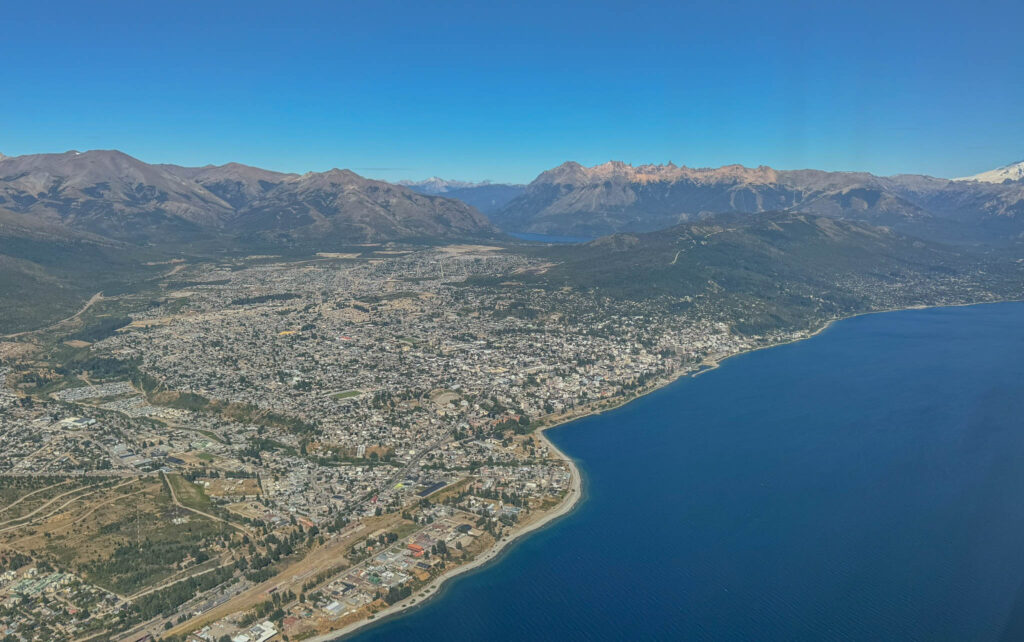
Bariloche is relatively easy to navigate. While public transportation options are available, we were glad that we rented a car, as many of the attractions that we were interested in are spread out across the region. Plus, our AirBnb was located outside of the city center on San Pedro Peninsula. Despite the 20-minute drive to the city center, the relative tranquility of the area, combined with amazing views of the Lake (Lago Nahuel Huapi), made it a good choice for us.
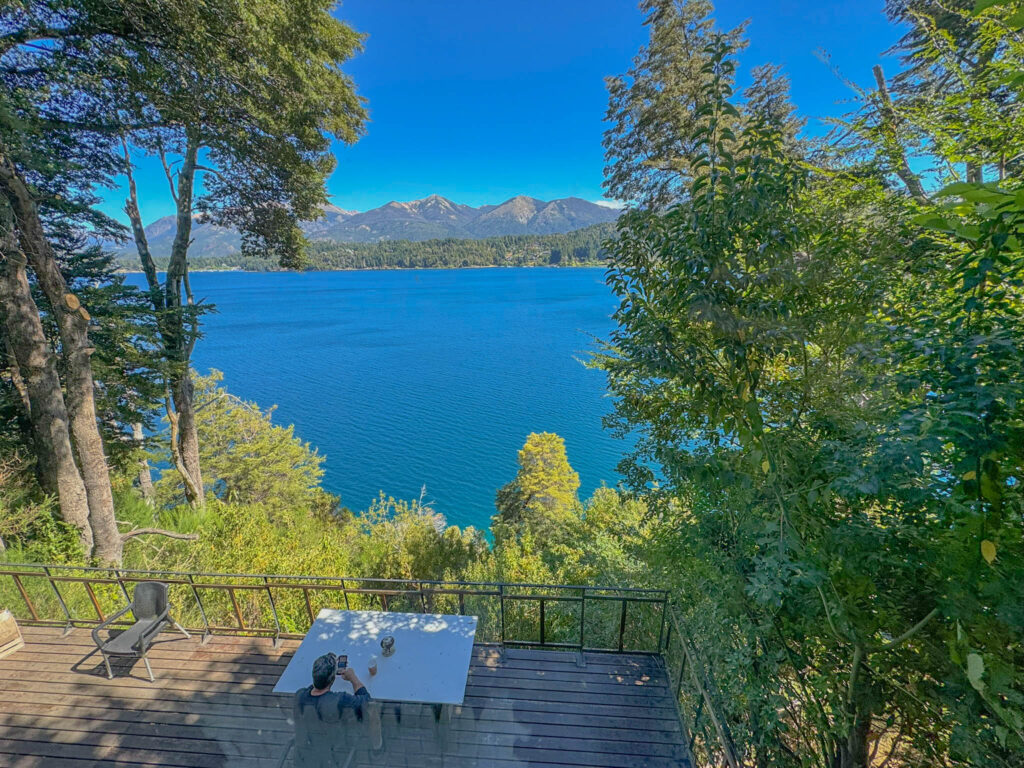
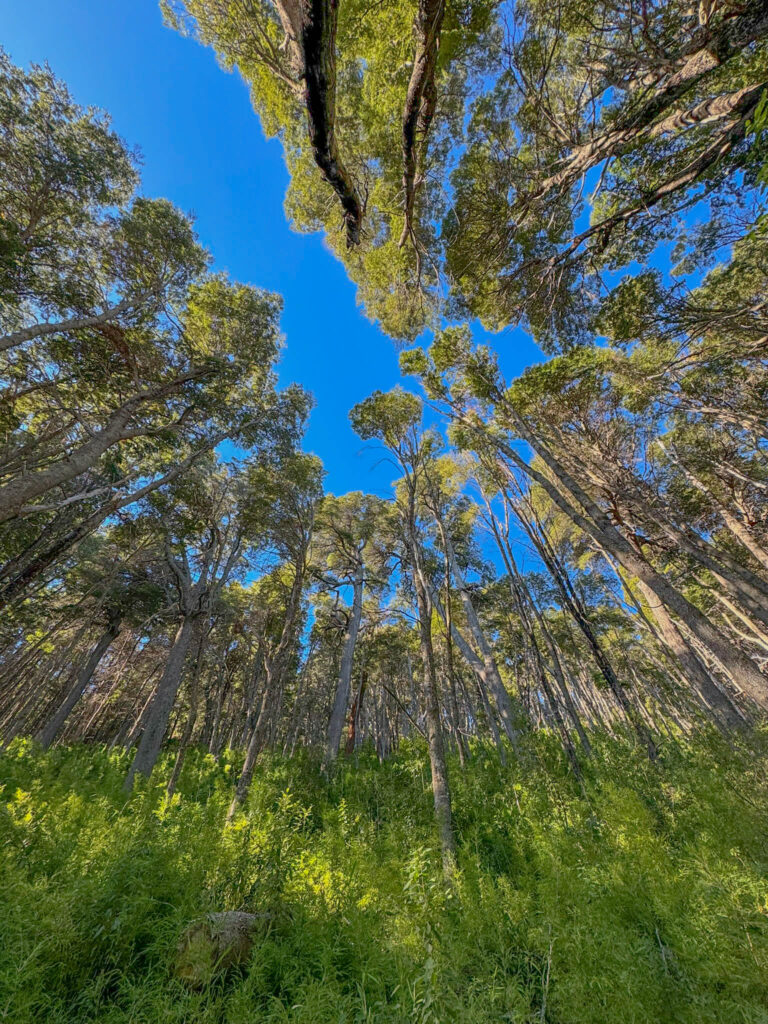
Things to do in Bariloche
Explore the City Center and “The Avenue of Chocolate Dreams”
If you’re visiting Bariloche, you’ll no doubt end up walking along the streets of the city center and pausing to enjoy sights such as Centro Civico, the main square of the town, with its views of Nahuel Huapi Lake and the surrounding mountains. Depending on the weather, you may find street performers and plenty of people-watching opportunities in the square. And for bird nerds like me, you’re also likely to encounter birds such as Chimango Caracaras and Black-Faced Ibis hanging out near the square.
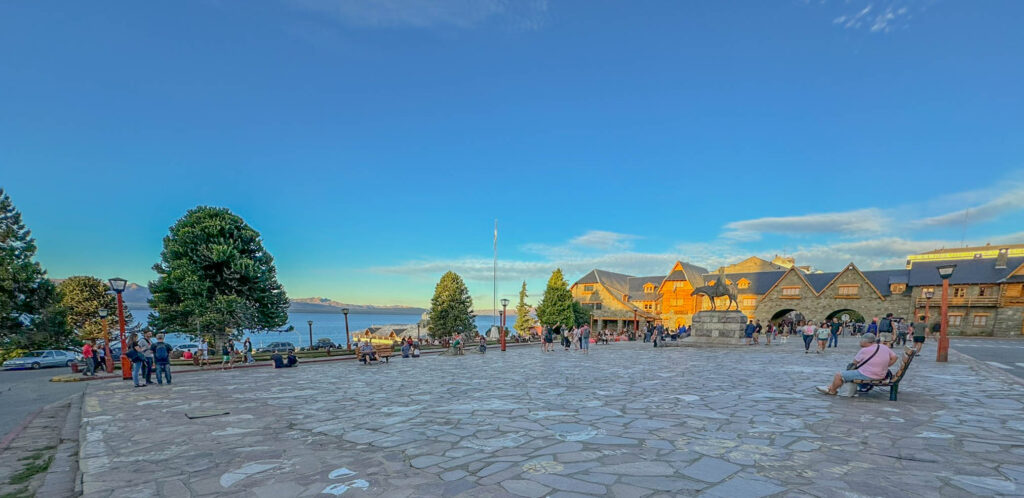
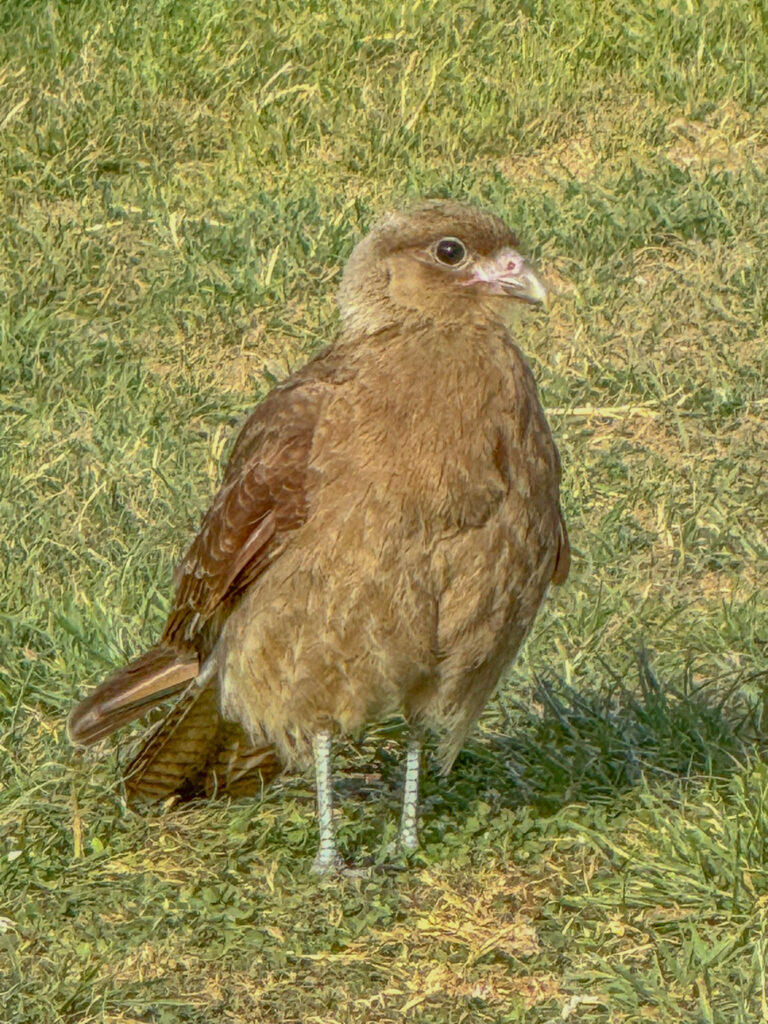
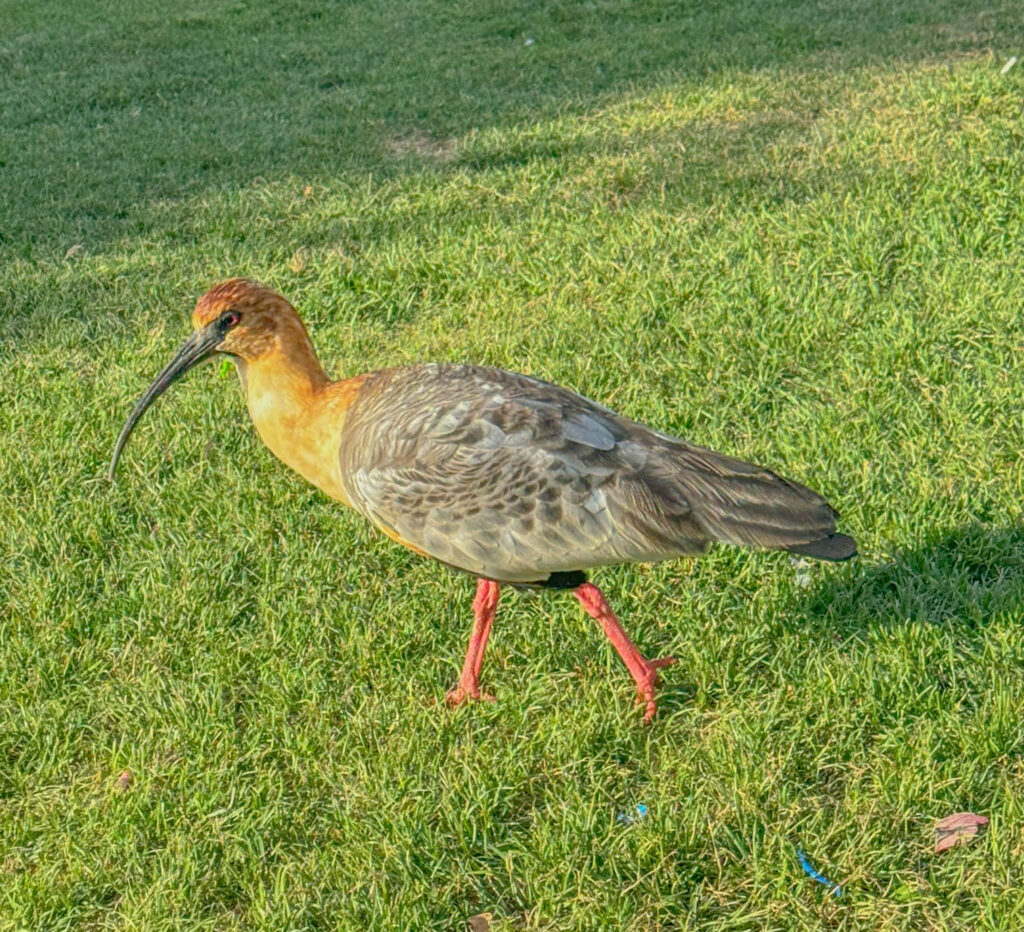
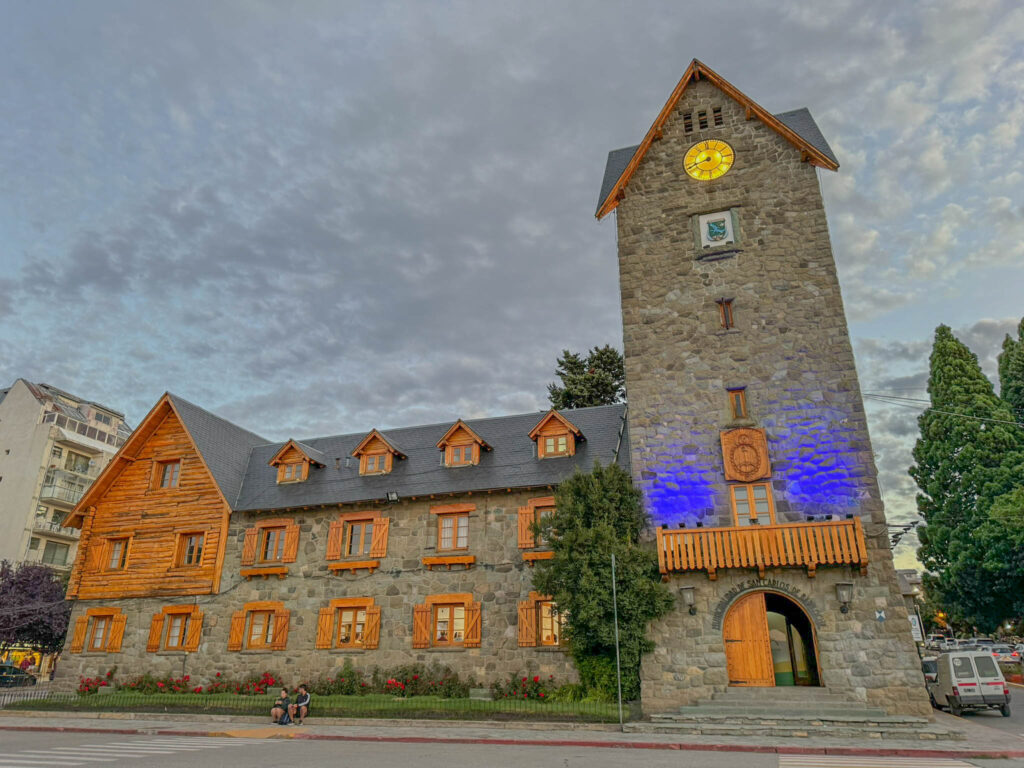
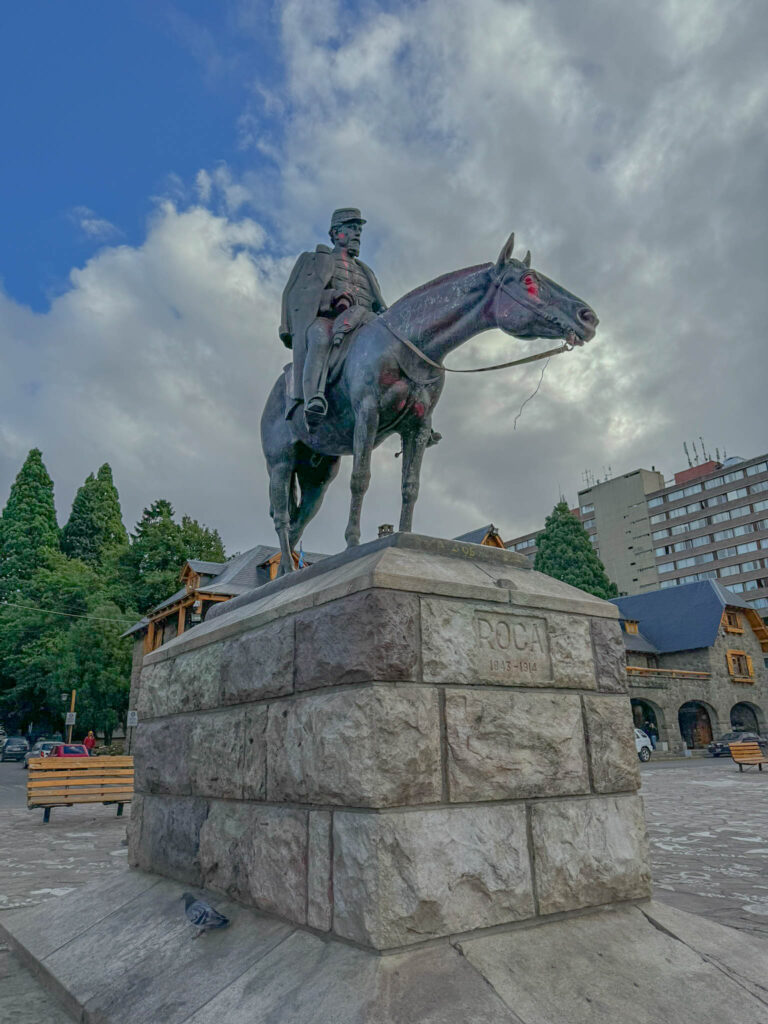
My legs were still extremely sore after a long hike at Torres del Paine, Chile that we’d finished less than 48 hours before arriving in Bariloche. While walking along the streets of Bariloche, I spotted a place that offered massage therapy called Patagonia Masajes (Ada María Elflein 433), thinking that might help ease my sore legs. I poked my head inside, inquired about availability, and was lucky that a therapist had an open spot in about 5 minutes if I was interested. Sold!
Given how destroyed my legs were after the Torres del Paine hike, it turned out to be one of the most painful massages I’ve ever had. The massage therapist and I had a laugh about that, and she told me that she felt bad inflicting pain, but my legs needed it. She continued her therapeutic torture. In the end, it was worth the discomfort and my legs felt better afterwards. It’s a good option if you’re looking for a professional massage near the city center.
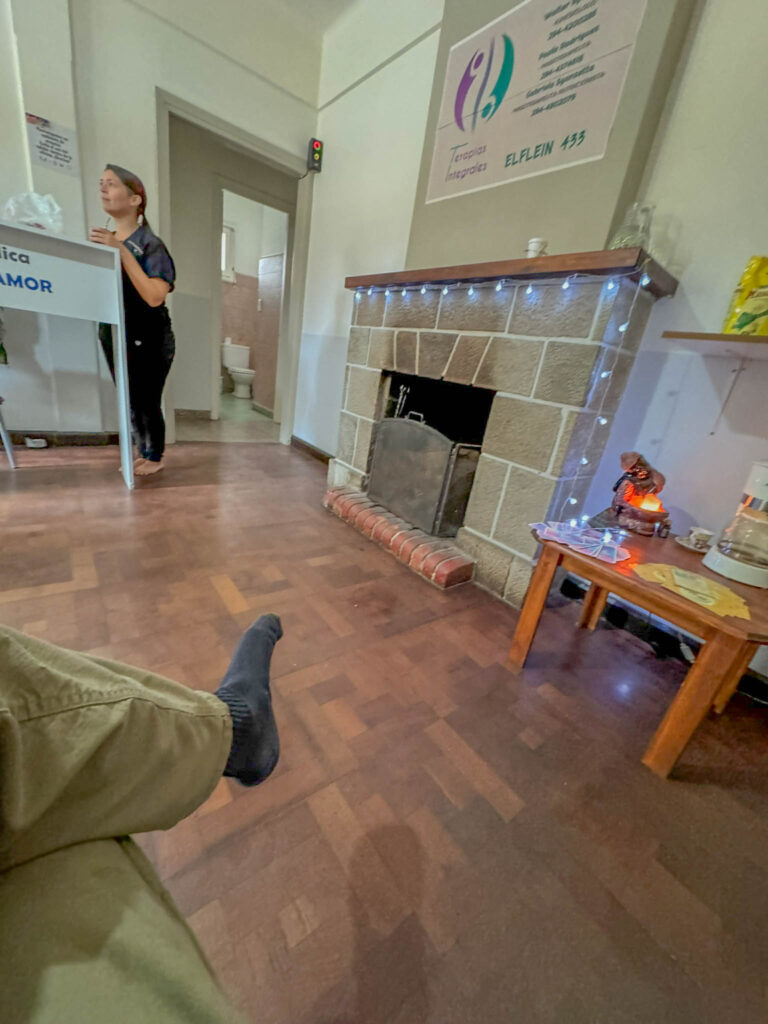
Another popular destination in Bariloche city center is “The Avenue of Chocolate Dreams”. I think you can guess why this street is popular. It’s home to several chocolate shops, some of which are considered to be the best in Argentina. Since Bariloche is known for chocolate, I indulged (aka overdid it).
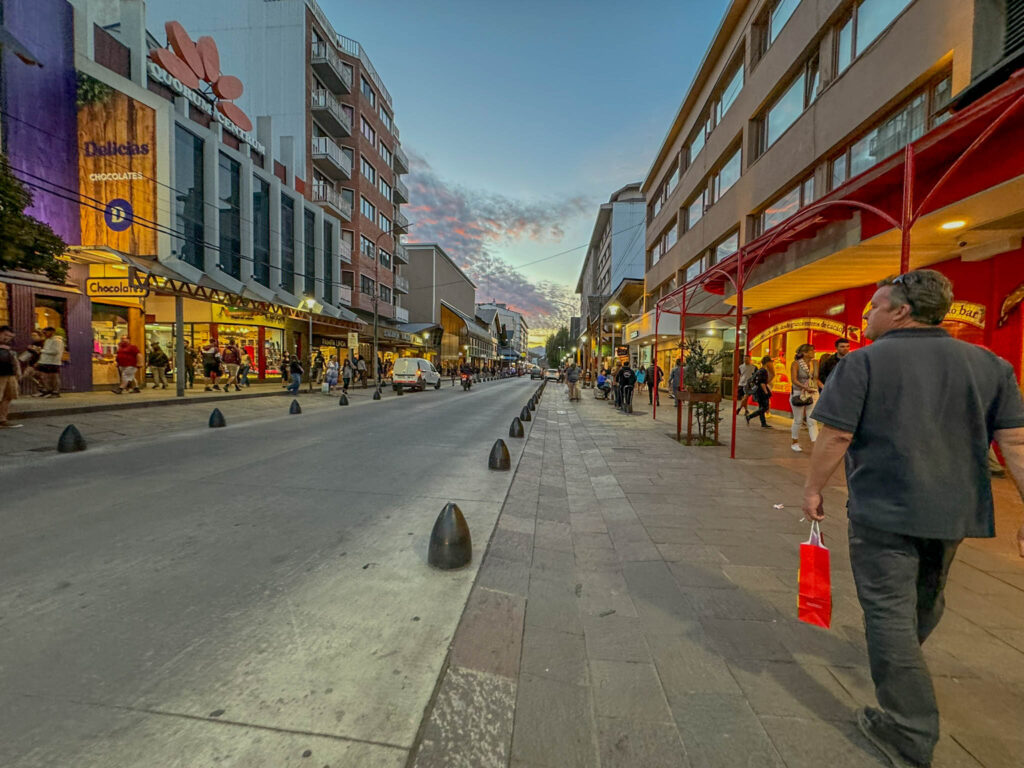
My brother and I decided to focus our attention on a chocolate shop and cafe called Mamuschka (which means “mother” in Russian) that has been operating in Bariloche since 1989. It’s hard to miss, with a bright red exterior and Matryoshka dolls on the roof of the entrance. According to Mamuschka’s website, they have more than 200 products to choose from.
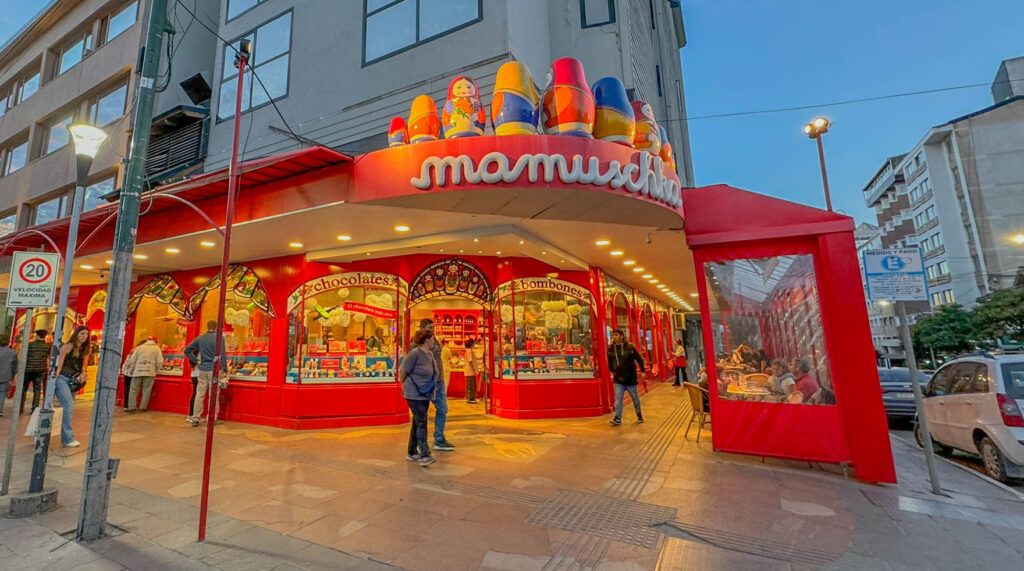
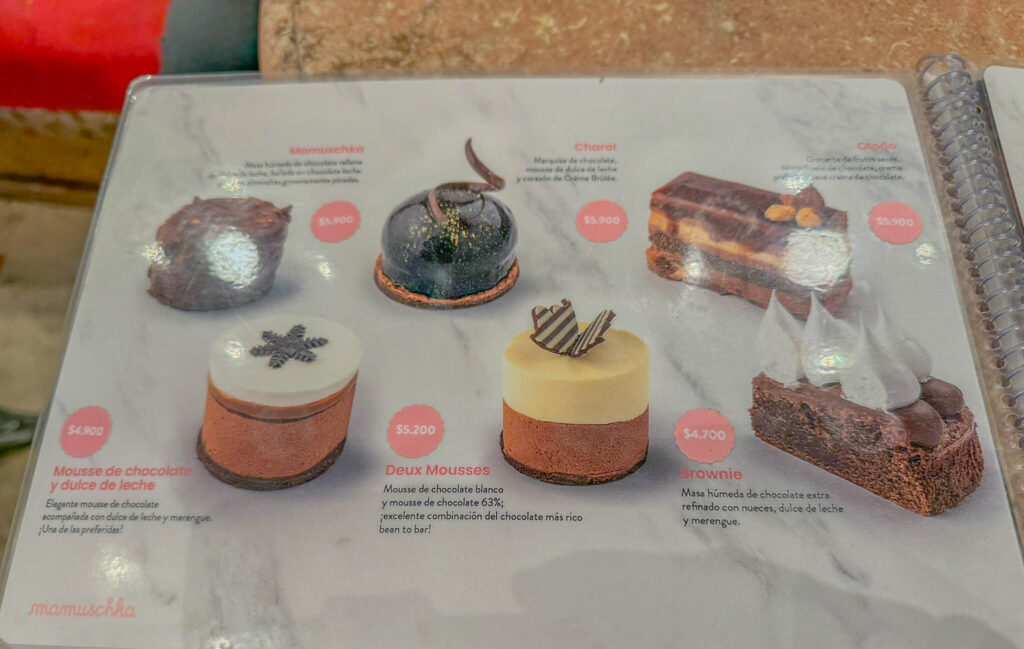
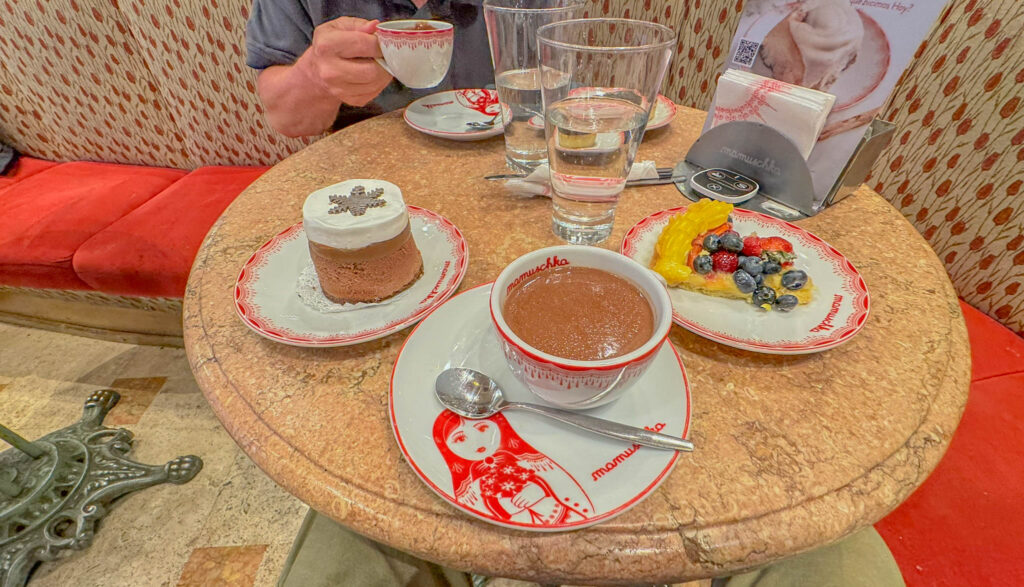
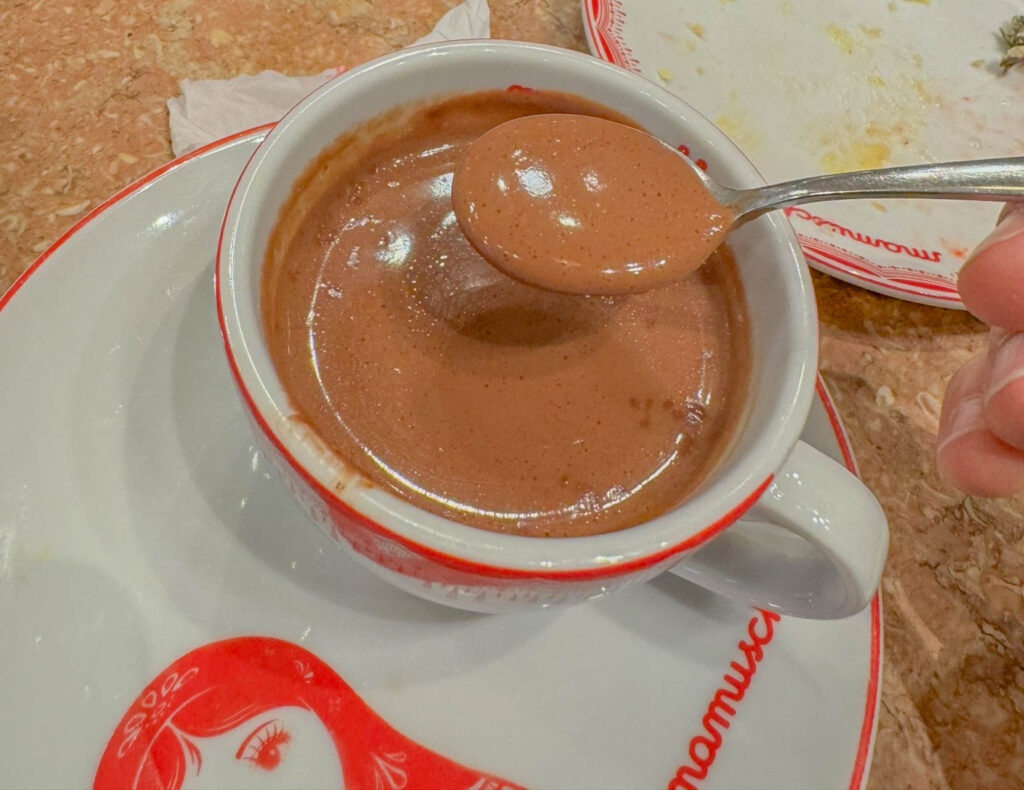
I “only” sampled four of the 200 items on offer. After tasting a piece of milk chocolate, eating two desserts, and downing a cup of the thickest hot chocolate I’ve ever had, I had a feeling similar to what I get after eating frosting flowers on a large slice of cake. Sugar overload. While I didn’t find it to be on par with some of the amazing chocolate I’ve enjoyed in places like Switzerland and Belgium, the desserts were excellent and worth the stop.
Craft Beer Tour
As for beer, the Patagonia region has a variety of craft beer to enjoy. Even though I quit drinking alcohol twelve years ago, I still enjoyed touring some local breweries with my brother. We visited three breweries: Gilbert Brewery (Cervecería y Restaurante Gilbert), Patagonia Brewery (Cerveza Patagonia), and Berlina Patagonia Brewery (Berlina Cerveza Artesanal Patagónica). If you’re planning to do the famous “Circuito Chico” (a famous route that you can drive, bike, or hike), then you’ll be close to these breweries. On a separate day, we visited a fourth brewery near the city center called the Kunstmann Brewery (Cerveceria Kunstmann).
Gilbert Brewery
Each brewery has a unique vibe. First, we visited Gilbert Brewery, which is a small, family-owned and operated brewery that has been in operation for about 20 years. The family has owned the land since the 1800s, eventually converting a barn into the brewery and restaurant. We were told they don’t add any preservatives to the beer. As a result, you can only enjoy a Gilbert brew (IPA, pale ale, and stout) on-site at their rustic restaurant. I’m sure they have other brews available at different times of the year, but that’s what was on tap when we visited. Gilbert brewery also serves an interesting variety of food. It was the best food of the three breweries we visited. My brother and I opted for Jabali a la Cazadora (wild boar), and it proved to be a good choice.
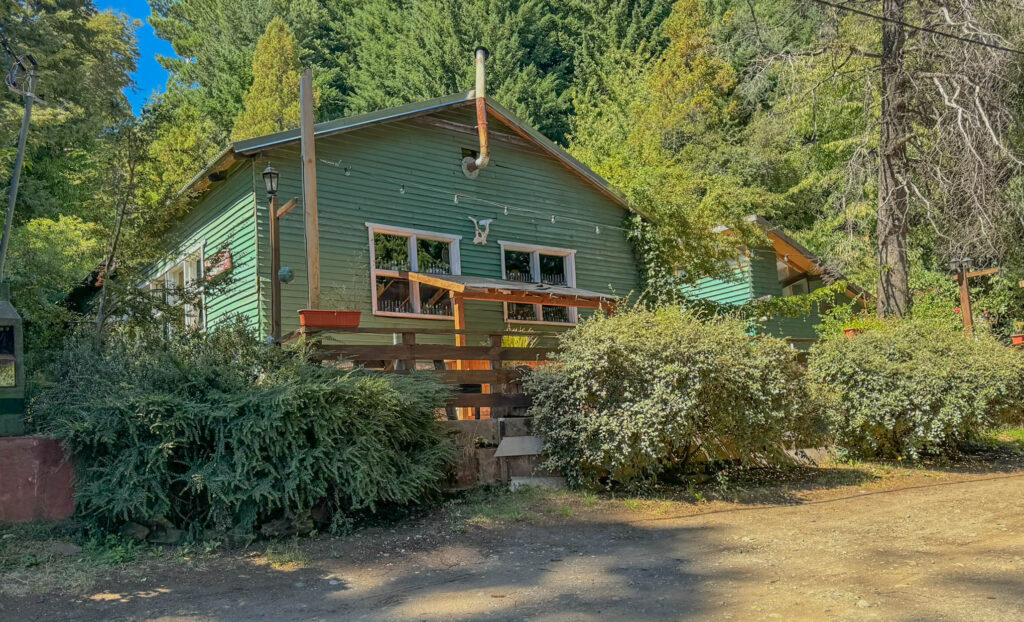
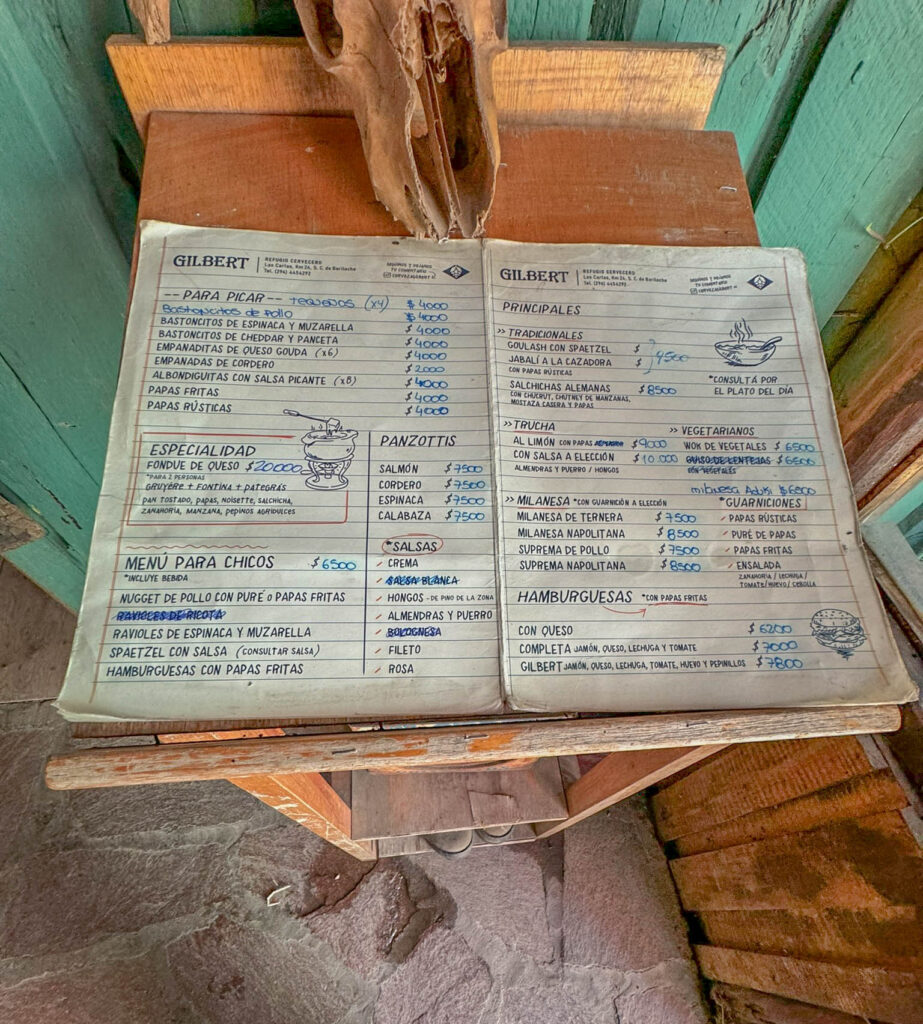
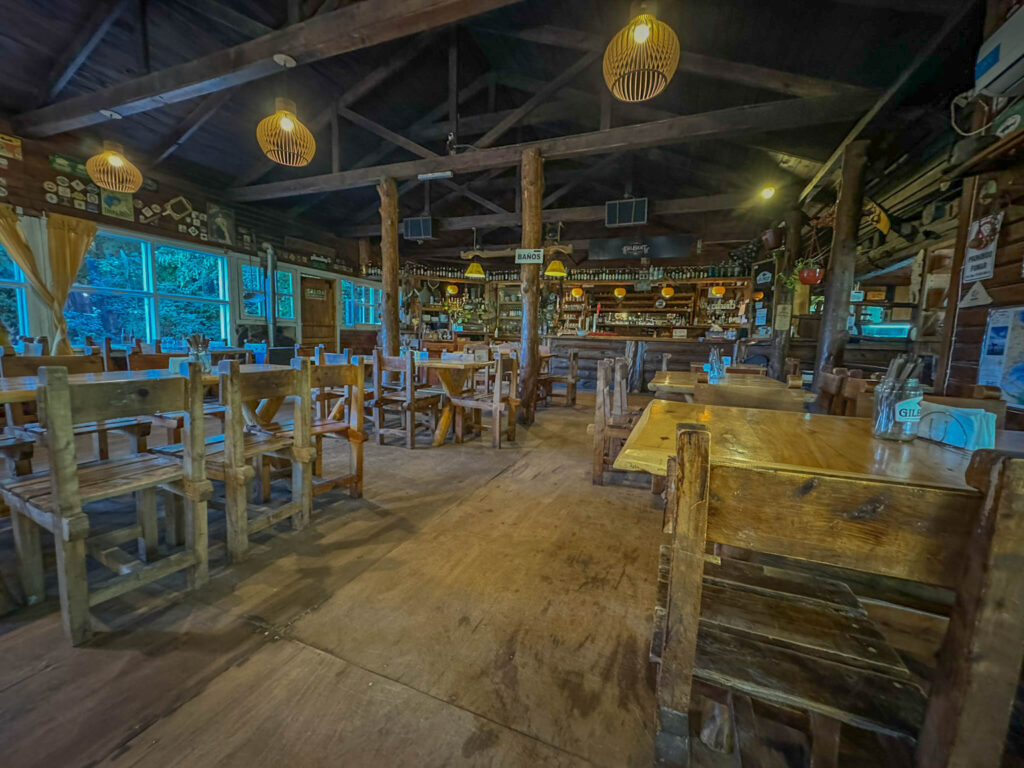
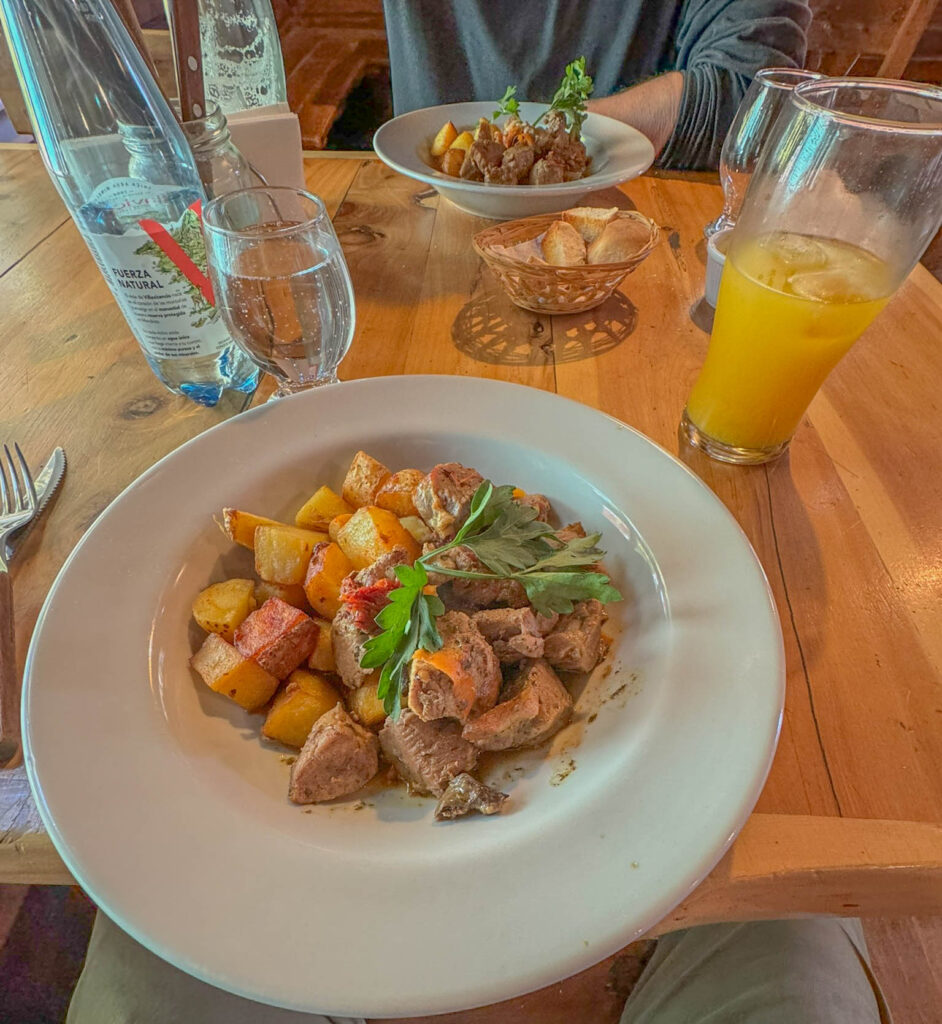
Patagonia Brewery
For our next stop, we went to Patagonia Brewery, which proved to be quite a contrast to the small, quiet, and low-key vibe at Gilbert. The Patagonia Brewery grounds are immense, and the place can get packed. The main draw, aside from the beer, are the amazing views, which make it a must-see destination.
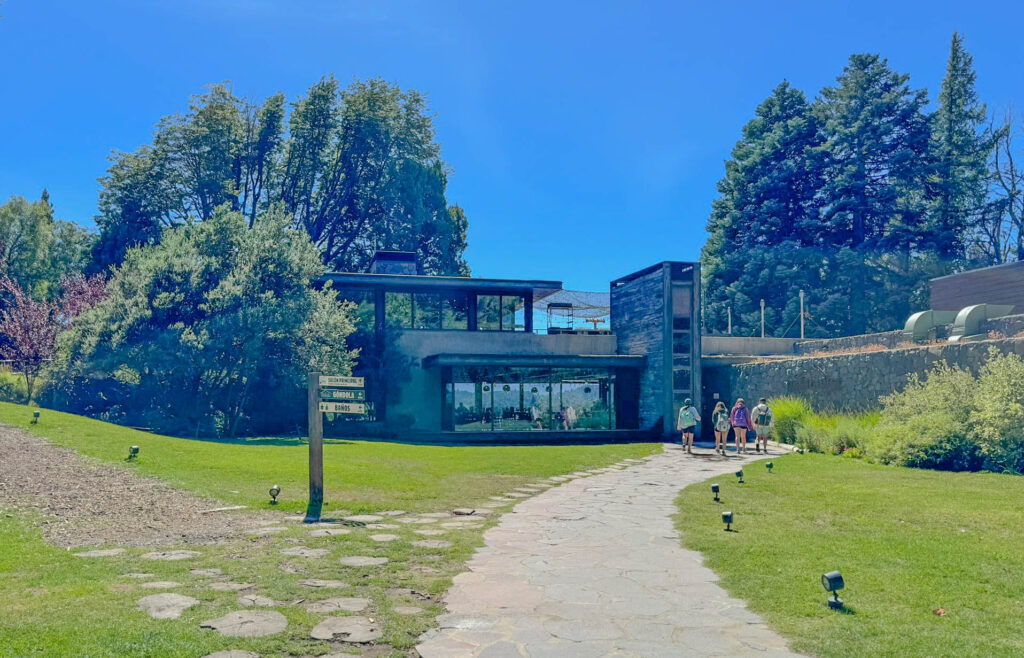
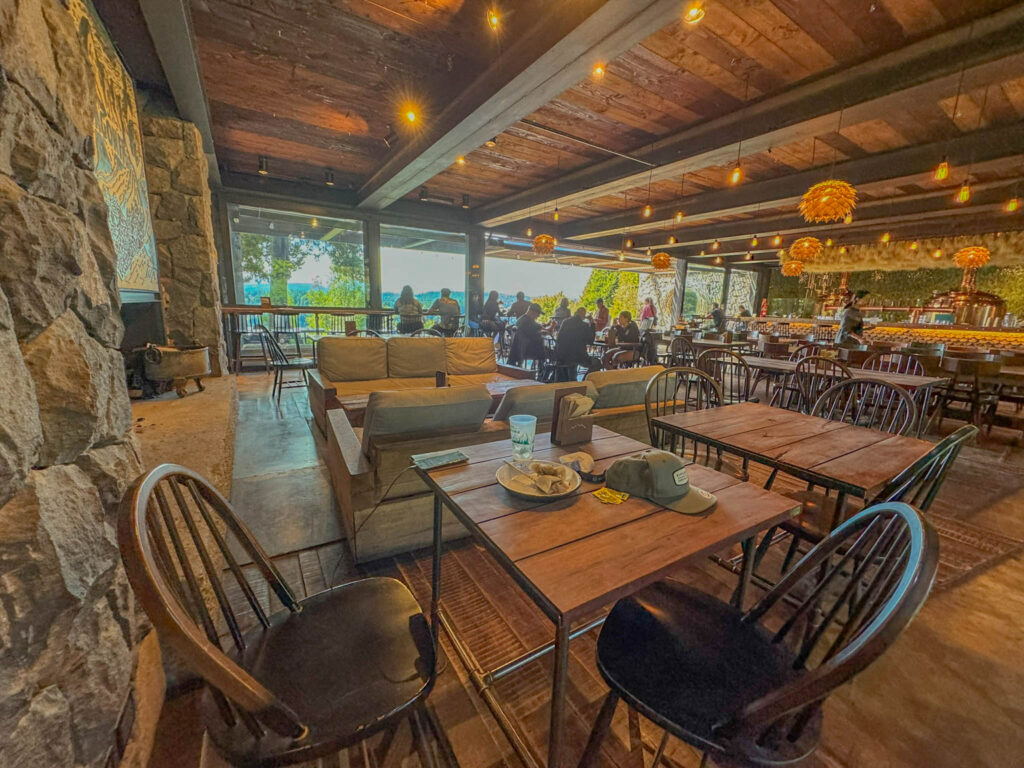
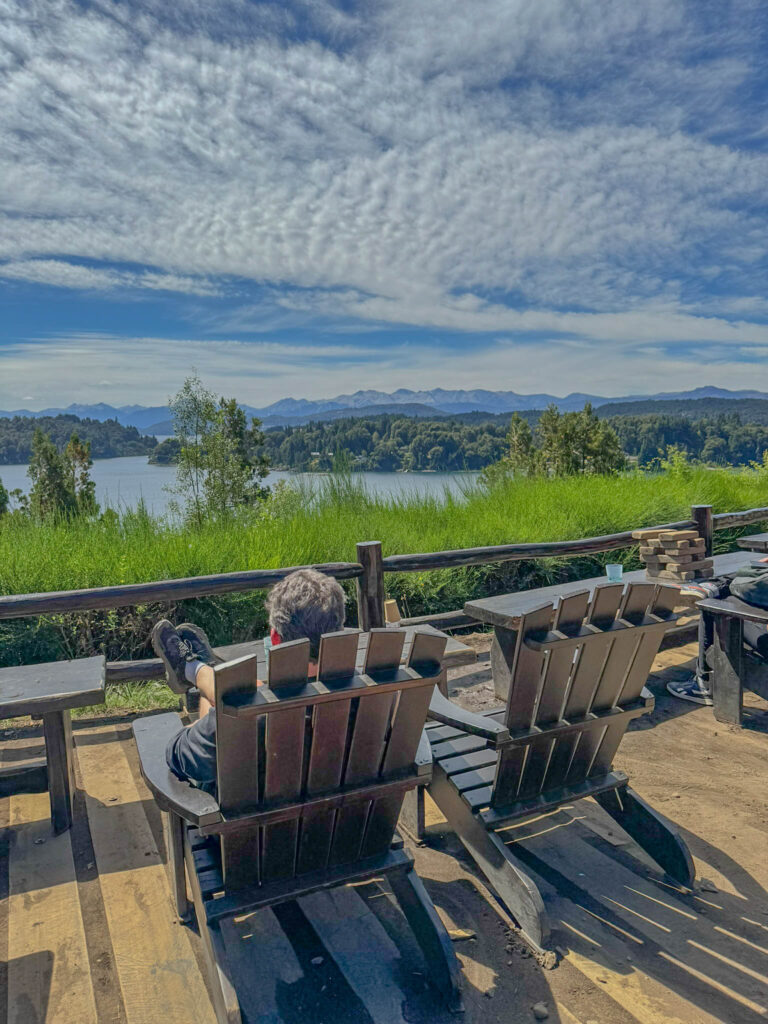
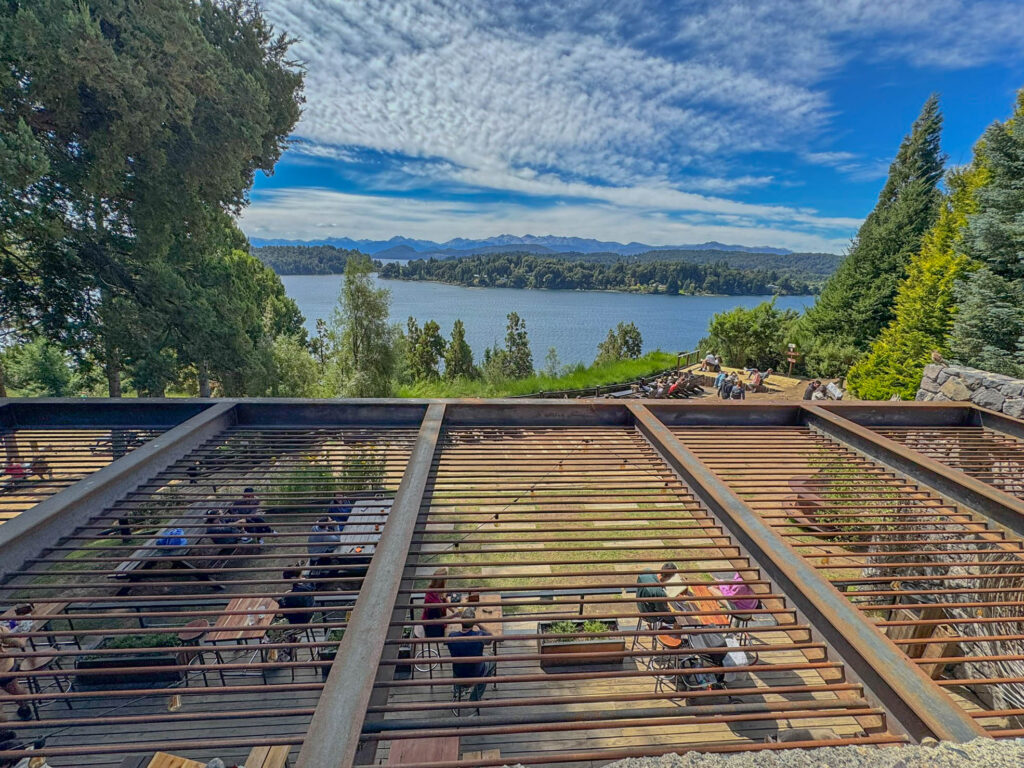
Berlina Brewery
For our third stop of our brewery tour, we decided to check out Berlina Brewery. This is another laid back, venue. When we visited, it appeared that of the seating was outdoors, and the “restaurant” was more like a food truck. However, I’m guessing that changes in the winter. We ended up getting a hamburger and it was tasty. Berlina Brewery also has a large fire pit, which would be very appealing on cold days and evenings.
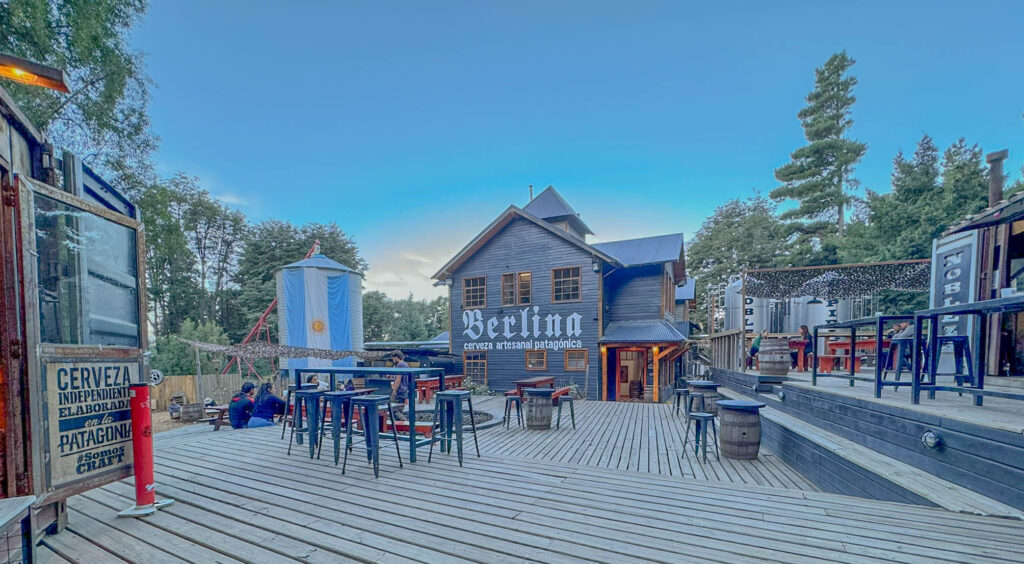
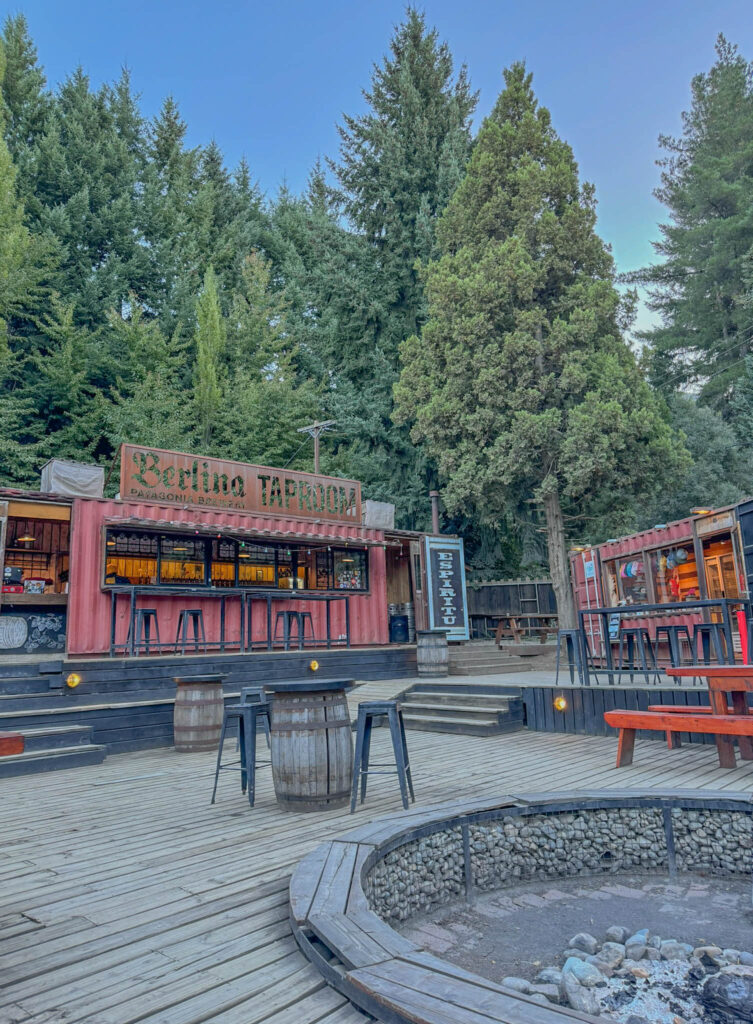
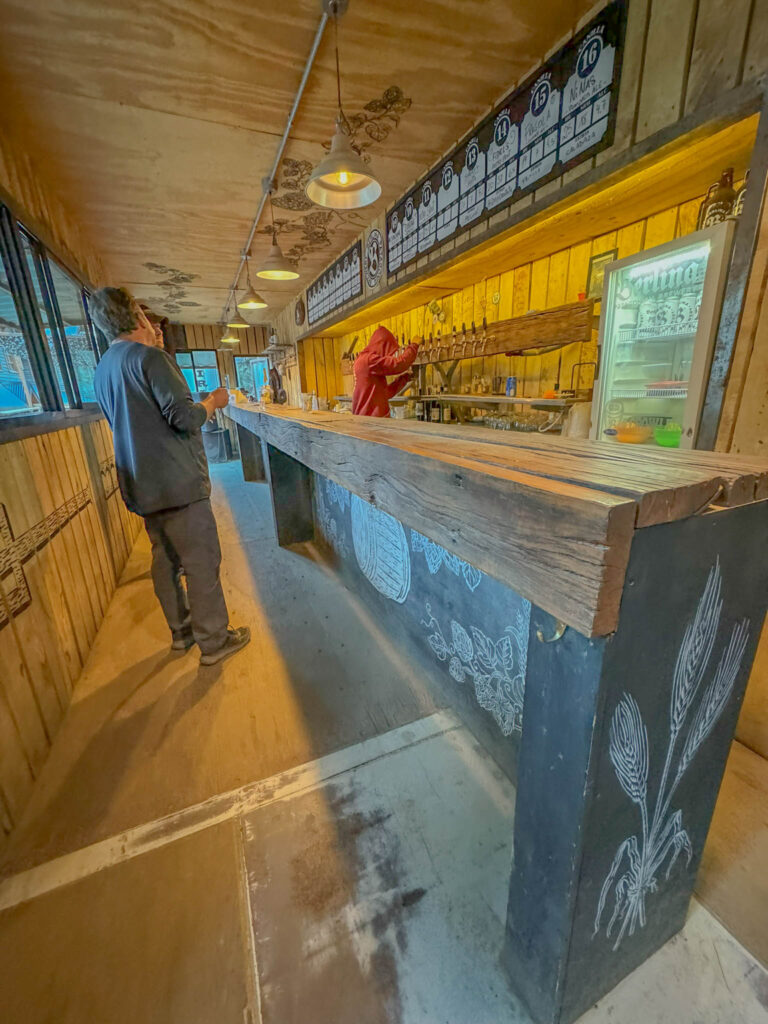
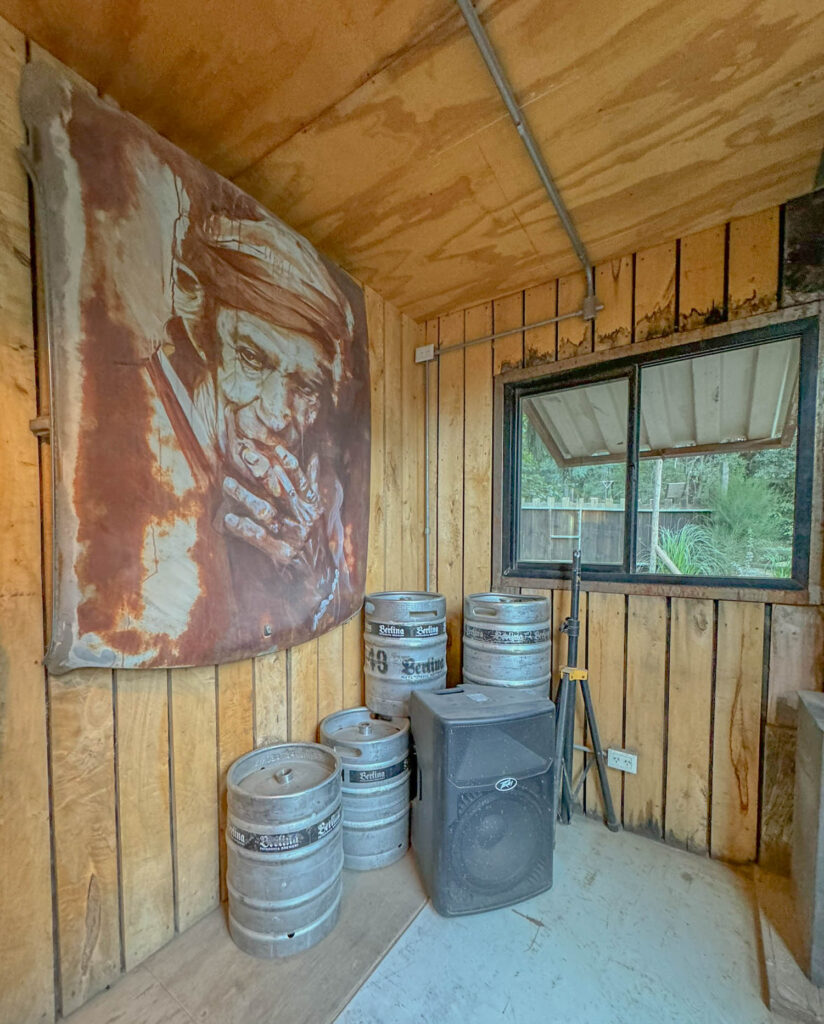
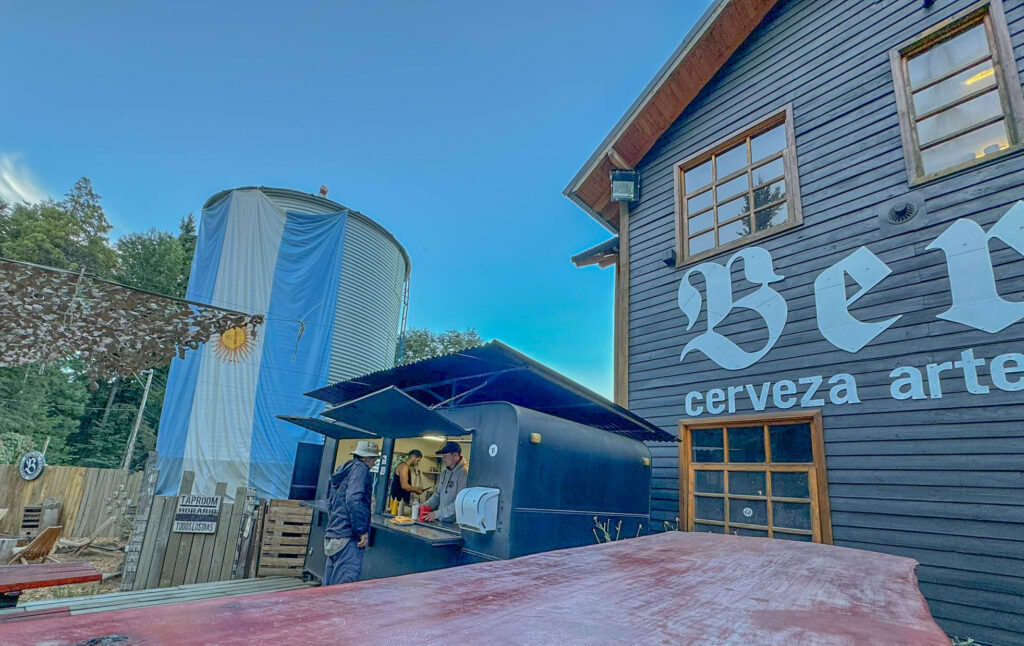
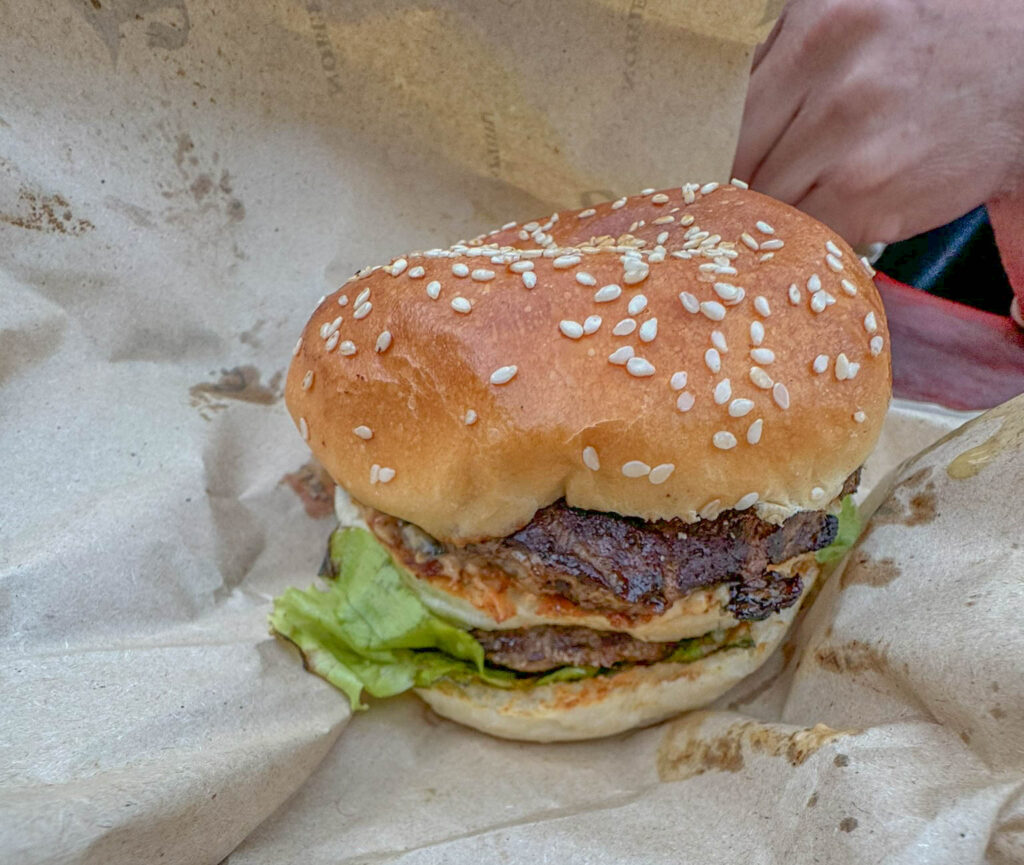
Kunstmann Brewery
Another brewery that’s worth visiting when you’re closer to the city center of Bariloche is the Kunstmann Brewery (Cerveceria Kunstmann). The food was very good here as well, and it’s a very popular place. It was definitely crowded during our visit, but well worth the stop.
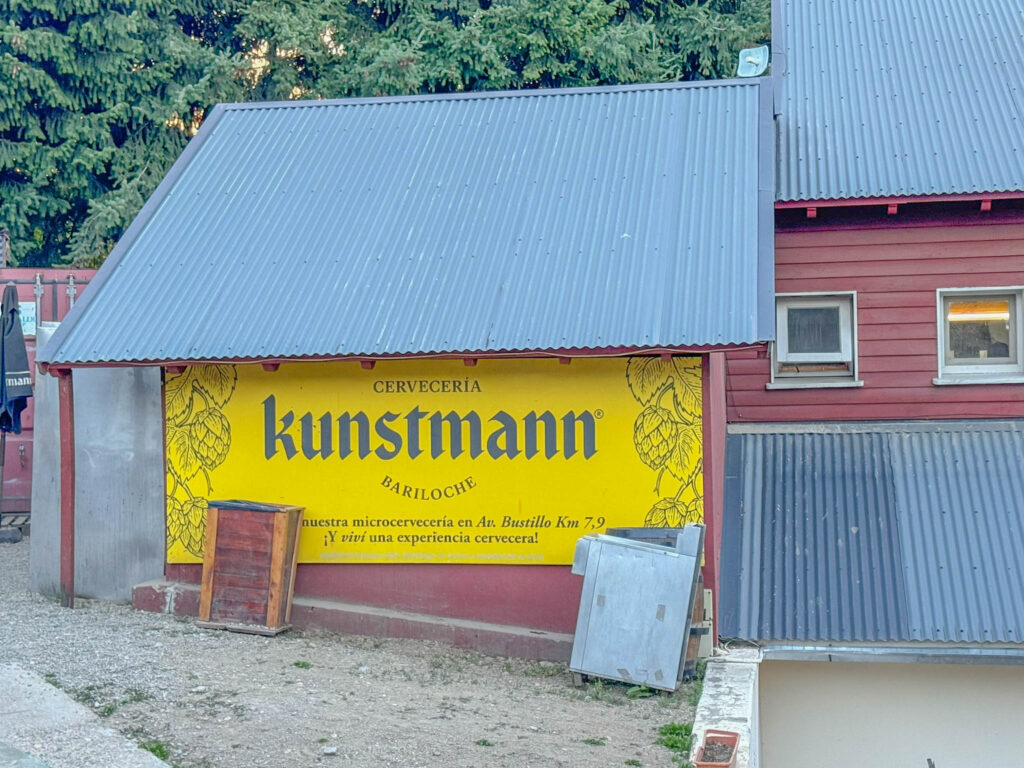
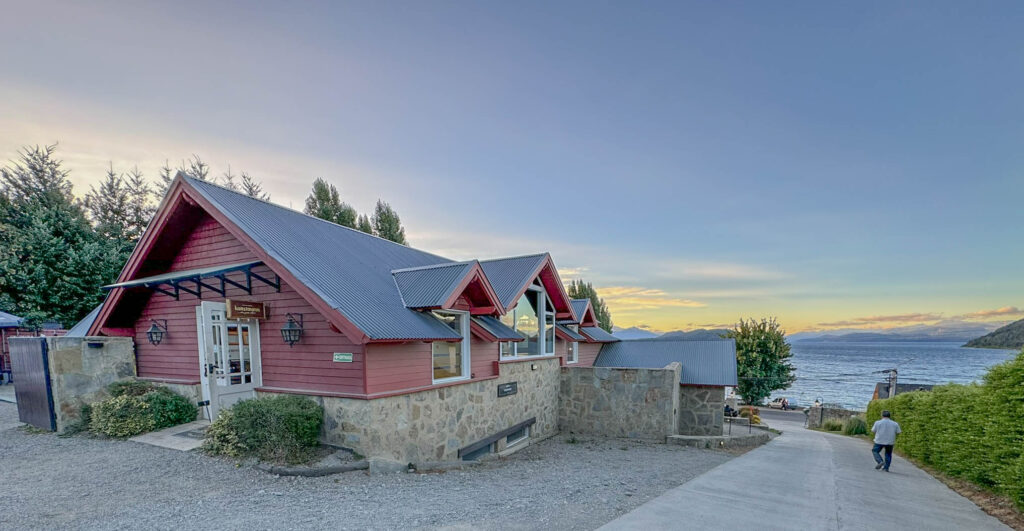
German Footprint & Nazi Presence Walking Tour
Another interesting activity to consider during your visit to Bariloche is the “German Footprint & Nazi Presence Walking Tour“. During the 90-minute tour, we learned quite a bit about the German-speaking immigration that took place in three waves: before, during, and after World War II.
The tour ($30) also discussed the story of what happened to several Nazis that ended up settling in Bariloche and other parts of Argentina, as well as their fate once they were discovered. This included the story of how Adolf Eichmann (the architect of Hitler’s “Final Solution” to exterminate the Jews from Europe) was captured by the Mossad (the national intelligence agency of the State of Israel) in a suburb of Buenos Aires, where he worked in a Mercedes-Benz automotive plant. The Mossad illegally transported Eichmann out of Argentina to face trial in Israel, where he was tried and hanged in 1962. Not surprisingly, there wasn’t much push-back on that illegal extradition.
There was also a mid-level German SS commander named Erich Priebke, who settled down in Bariloche for 50 years. Priebke lived under his real name in Bariloche while he operated a deli and worked at a German school. This changed when has past was uncovered in an ambush interview by Sam Donaldson. Priebke was eventually extradited to Italy, where he was convicted of war crimes. He was given a life sentence, which he served under house arrest until he died in 2013 at the age of 100.
The tour shared these stories, and many more, while showing us where these people lived and worked. It was an interesting tour and well worth the time and expense.
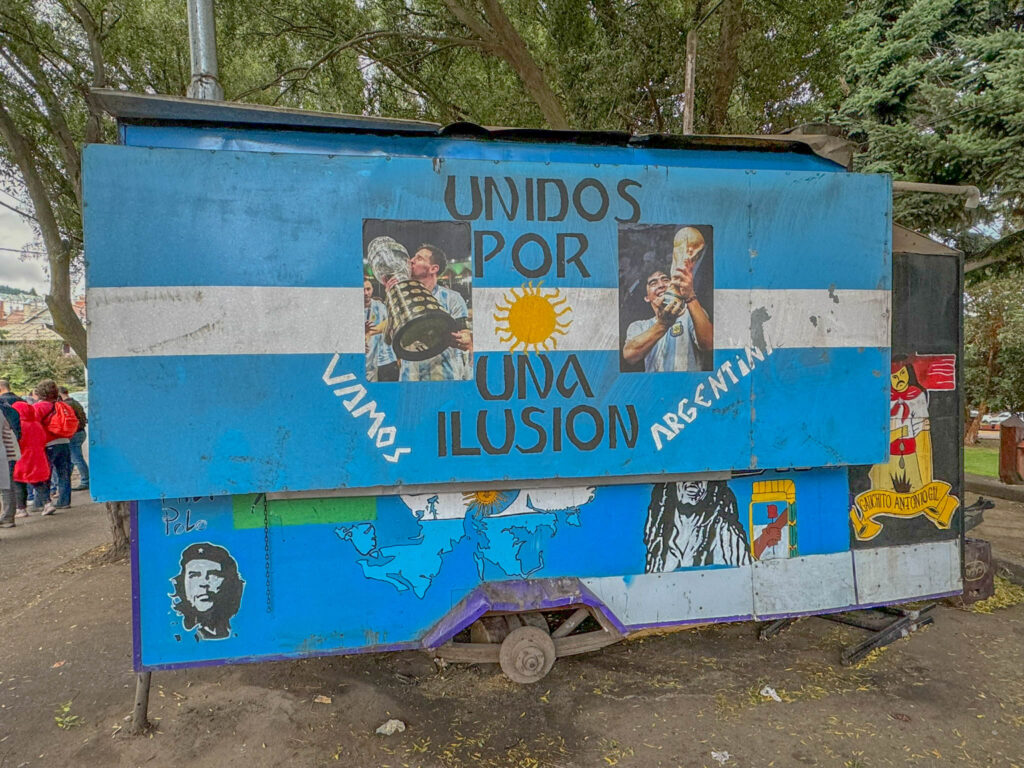
Parque Municipal Llao Llao
For an easy, but rewarding hike, I’d recommend checking out Parque Municipal Llao Llao, which means “many branches” in the Mapuche language. The hike takes you through tall trees as well as one area with a twisted and gnarled stand of cinnamon-colored Arrayan trees (aka Chilean myrtle). One trail ends at a lake and “beach”, with a view of the surrounding mountains. It’s another worthwhile stop and a good place to stretch your legs if you’ve been traveling.
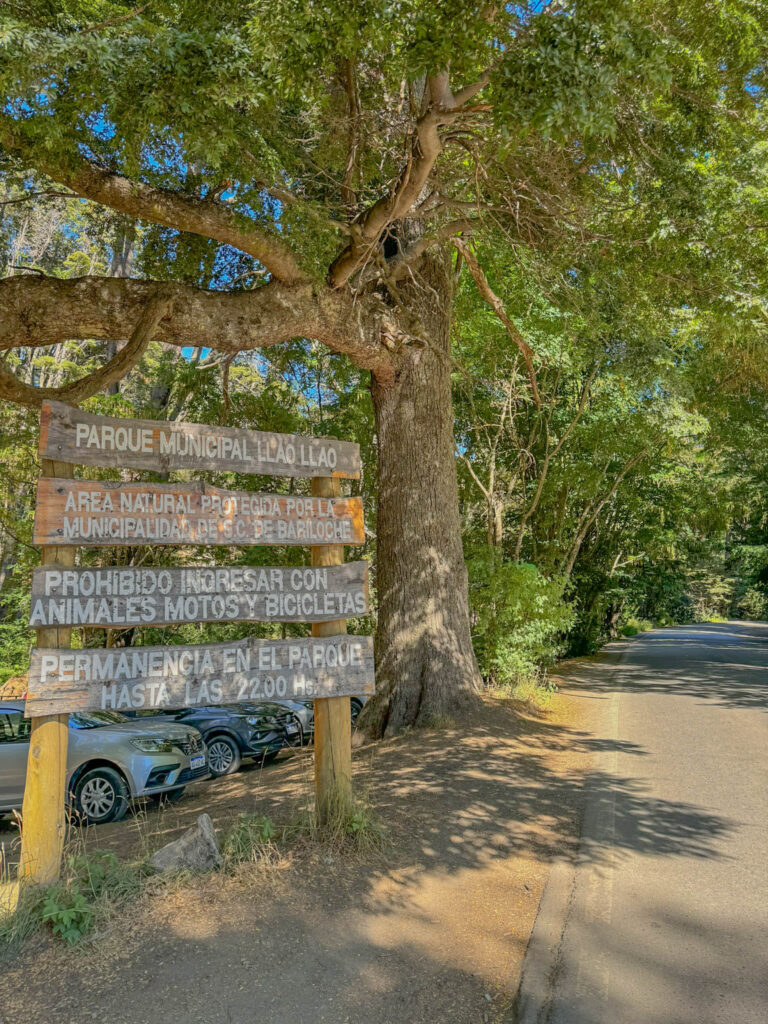
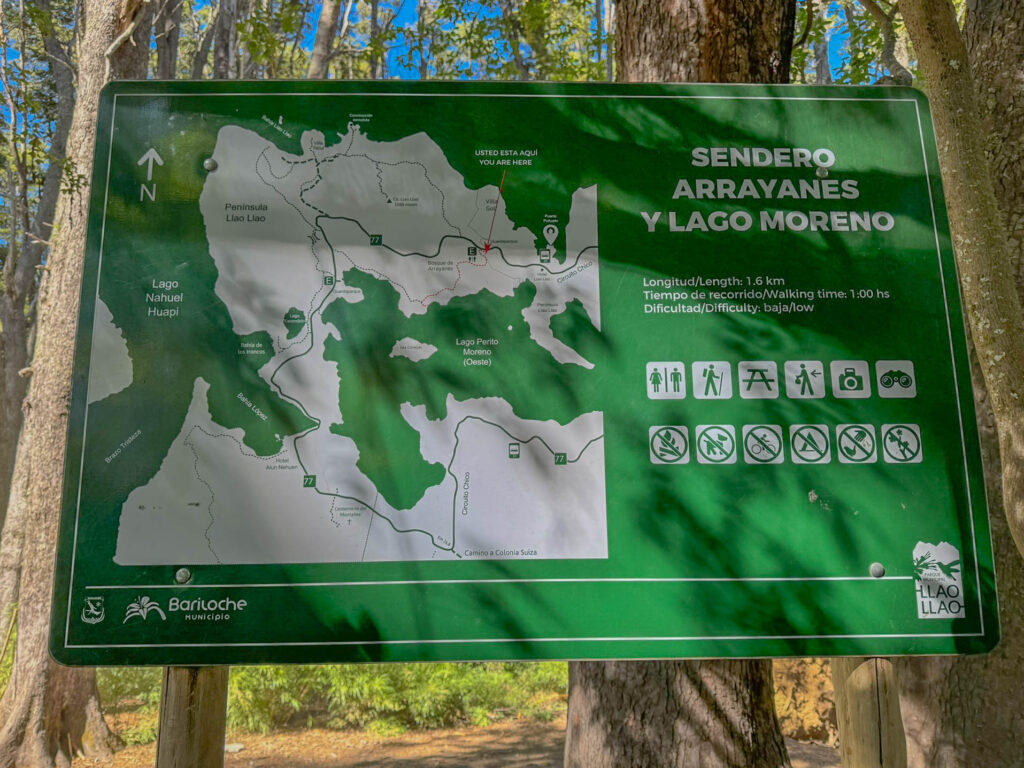
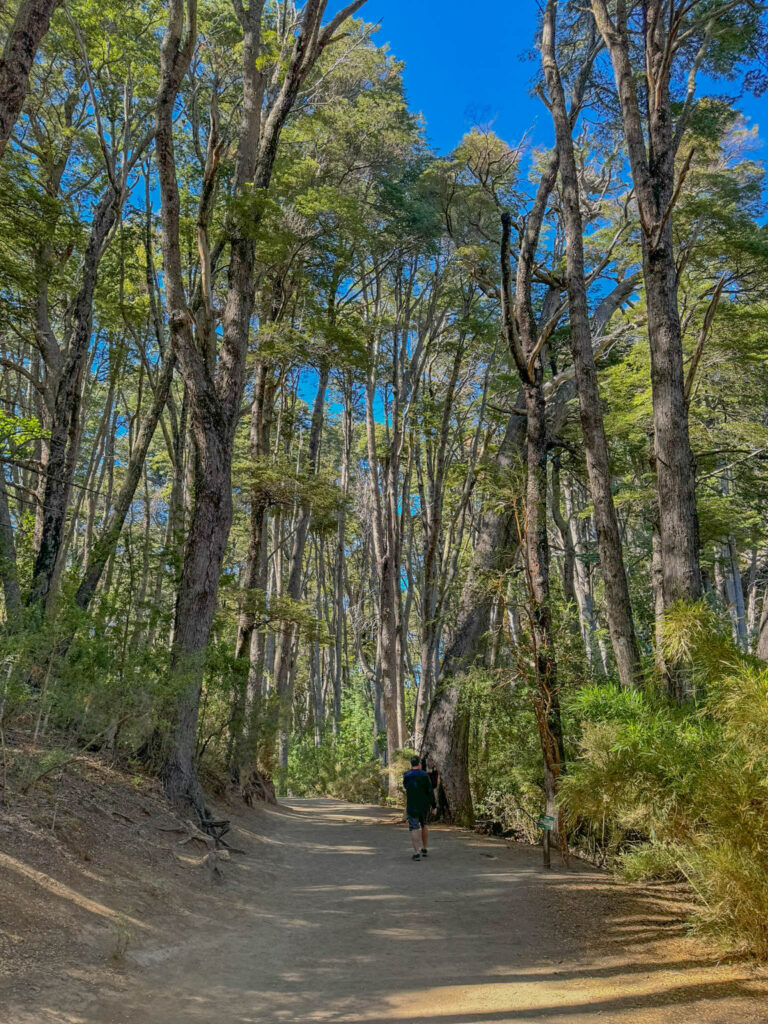
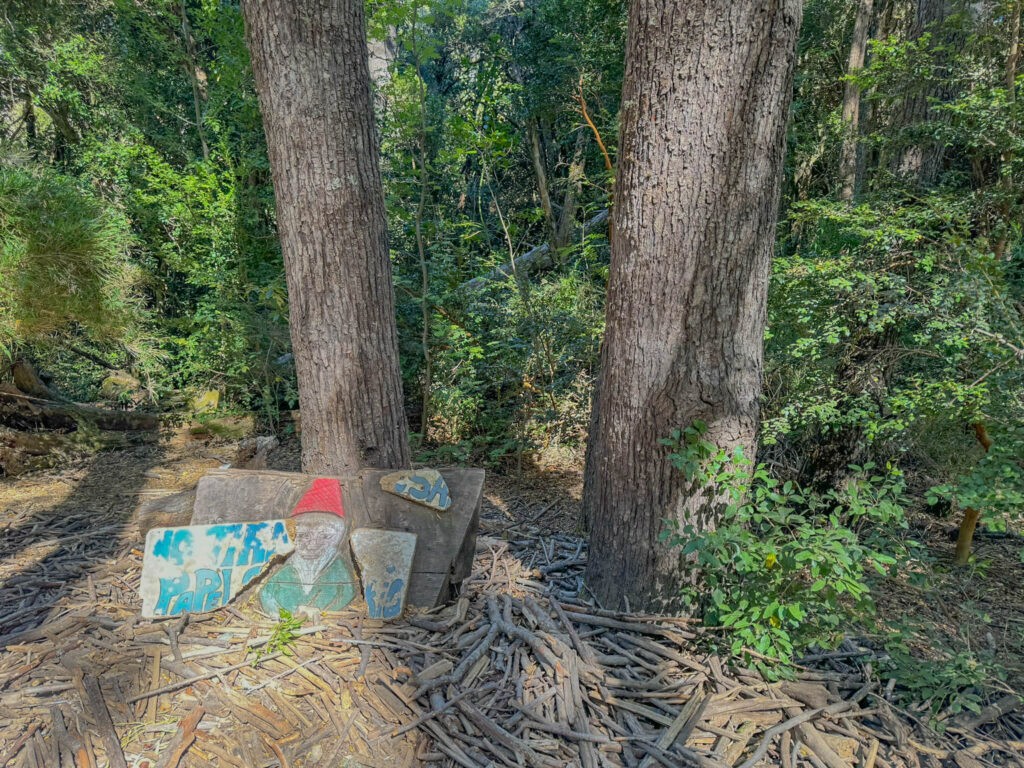
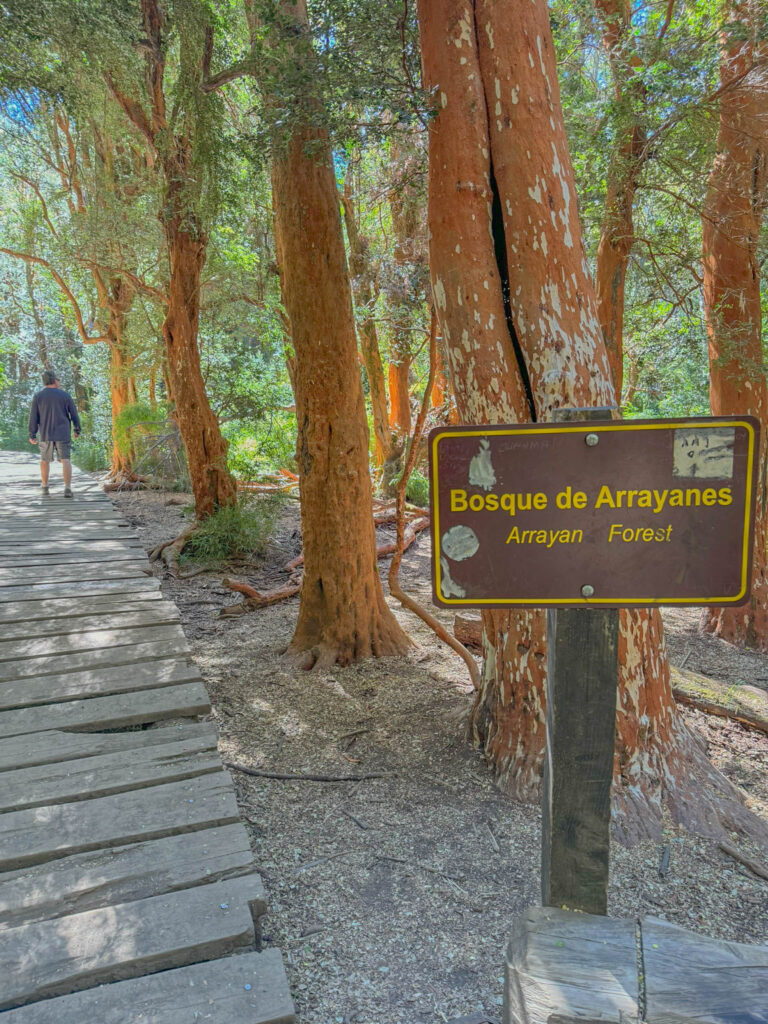
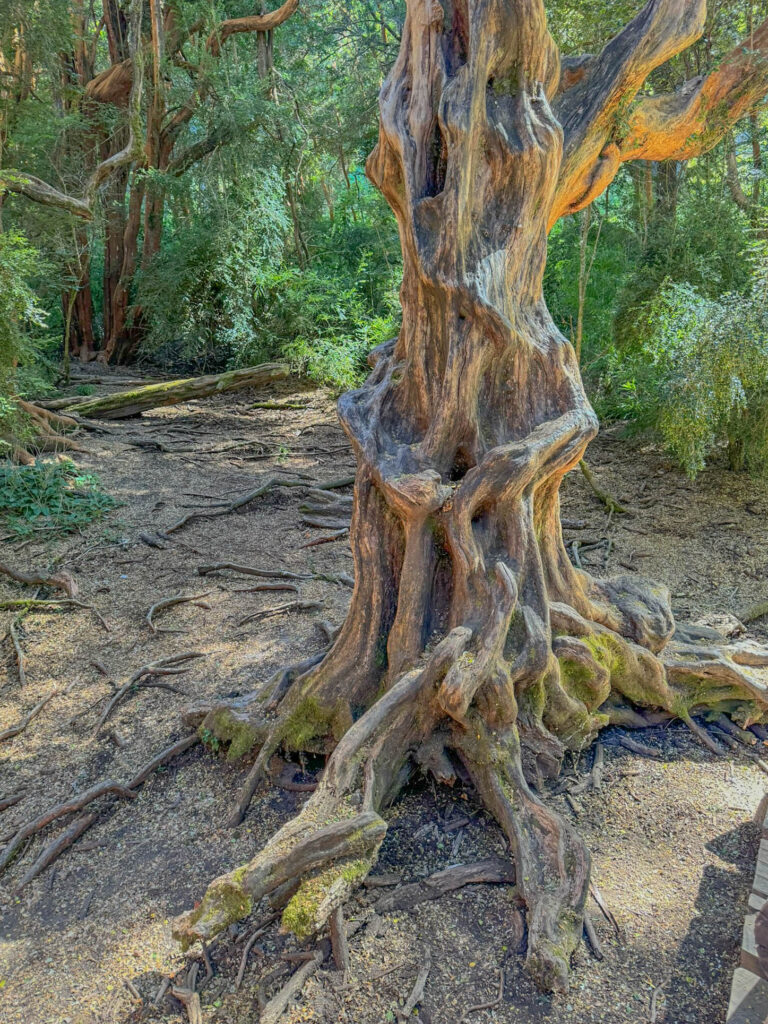
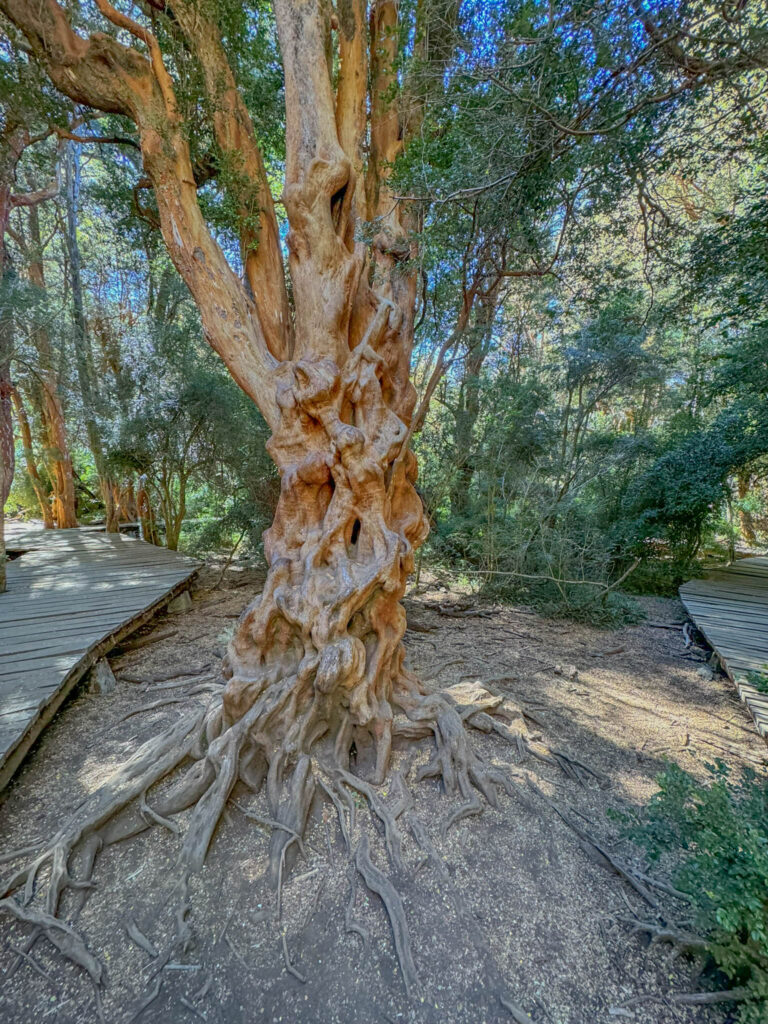
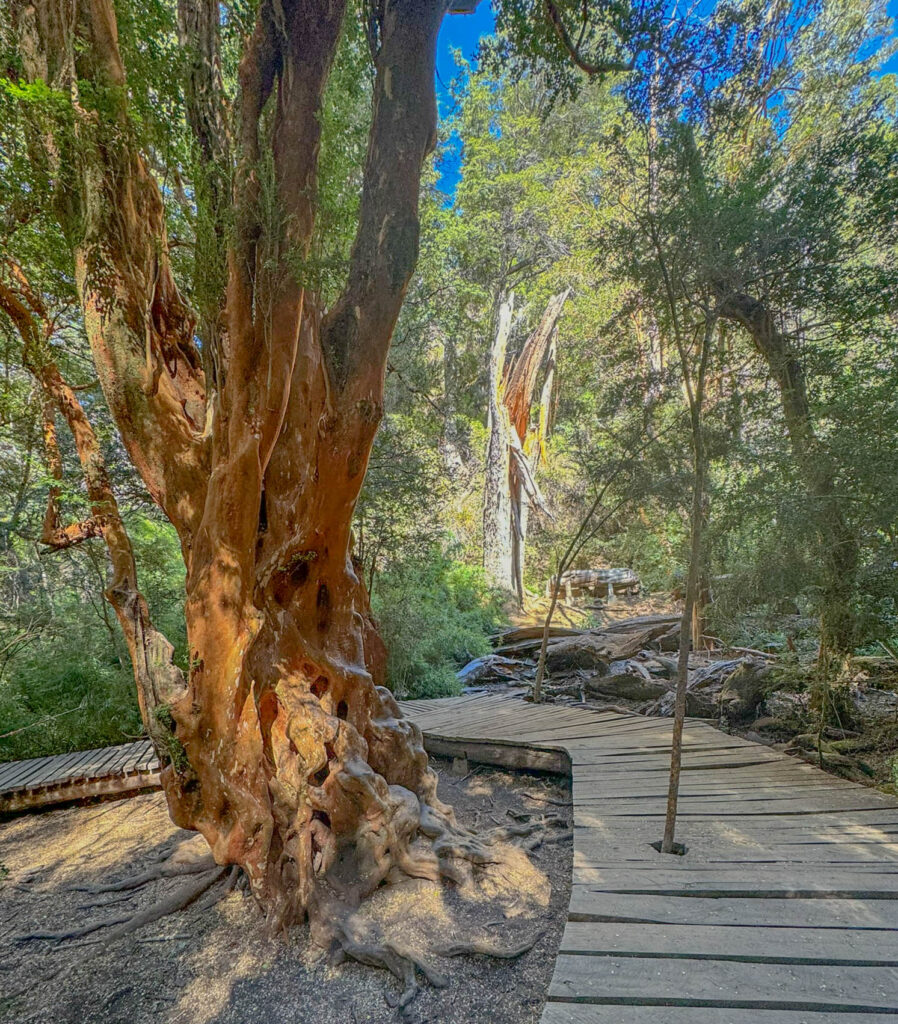
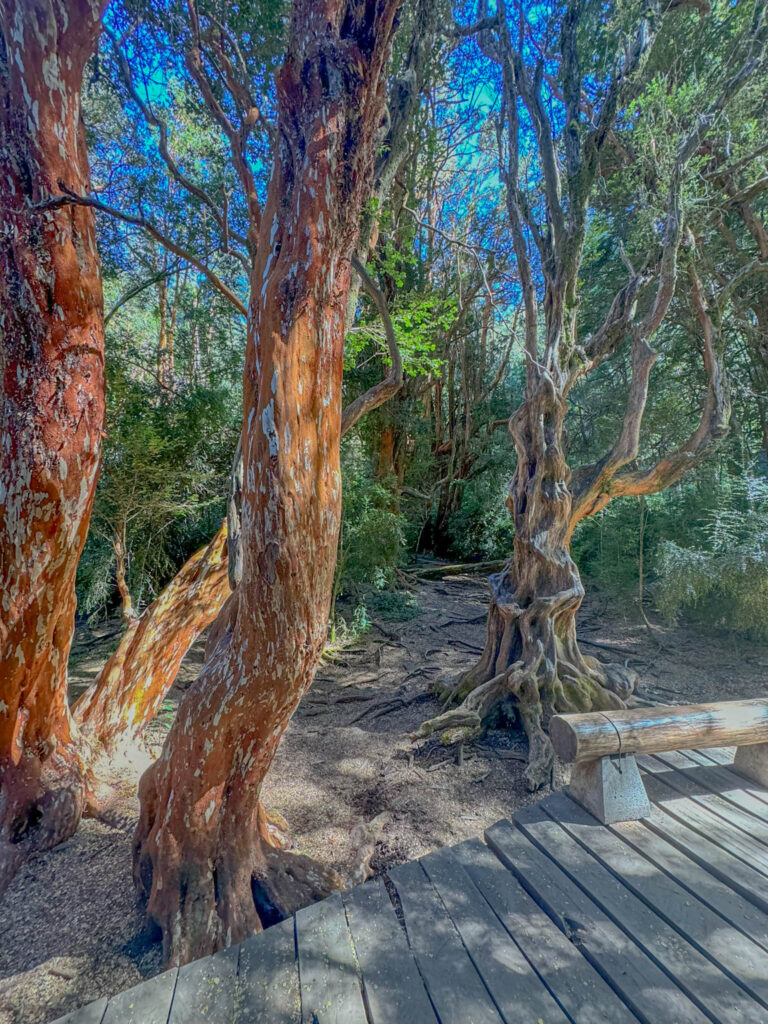
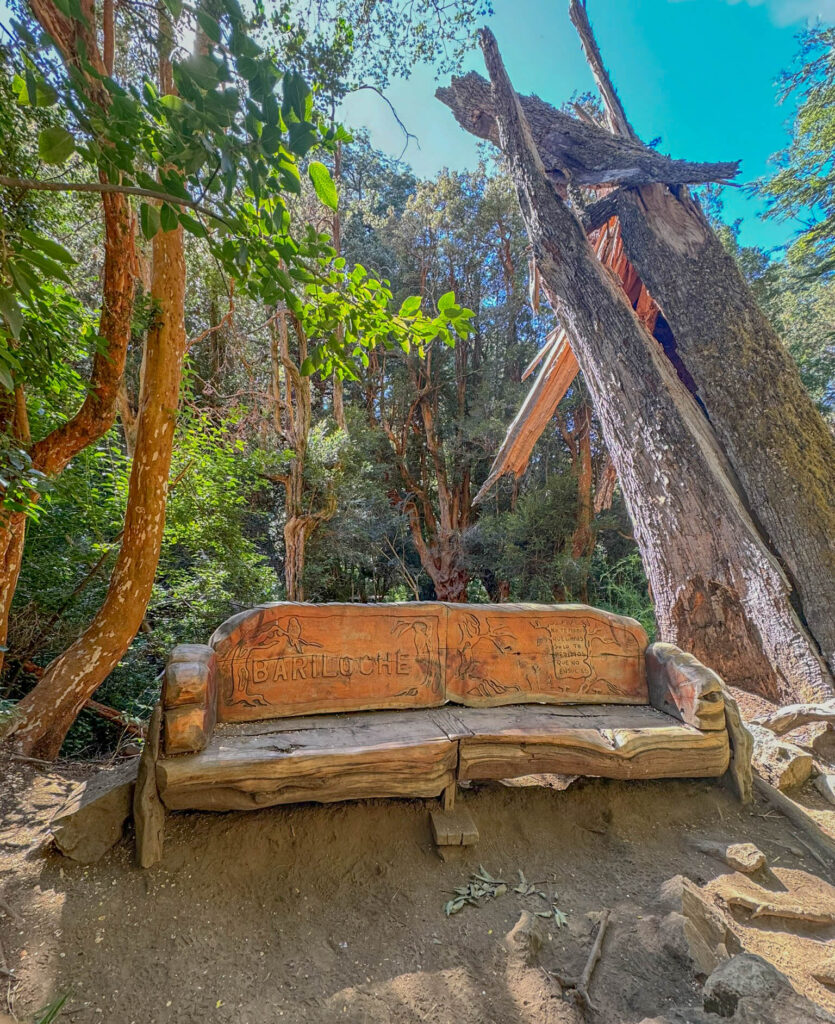
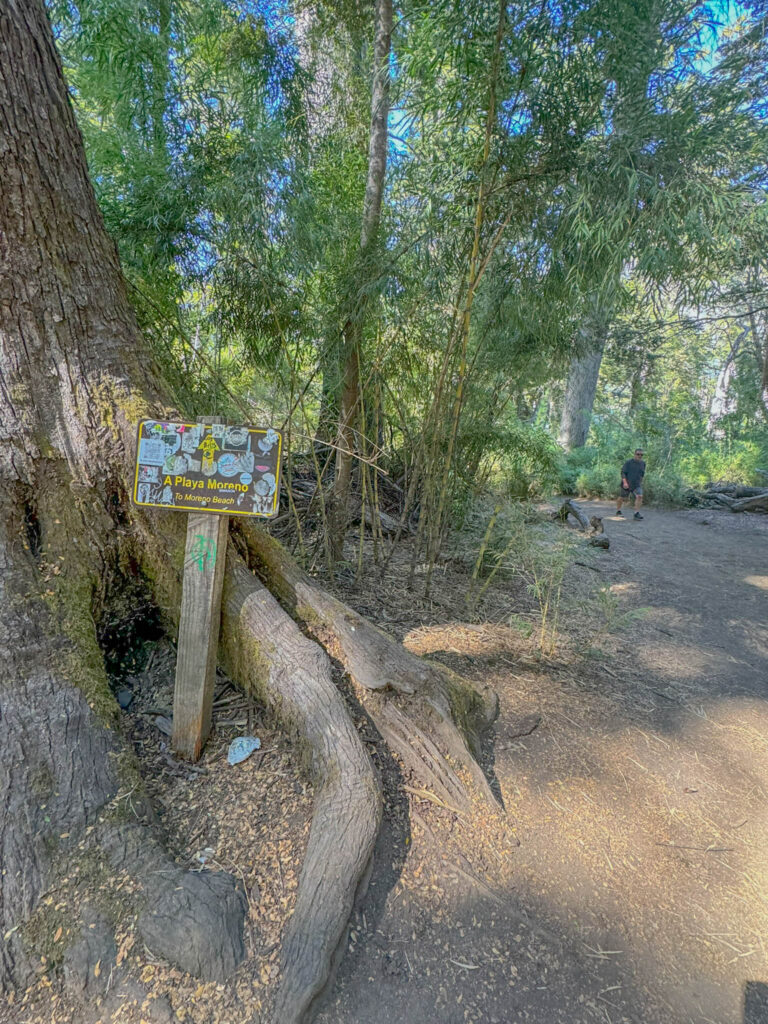
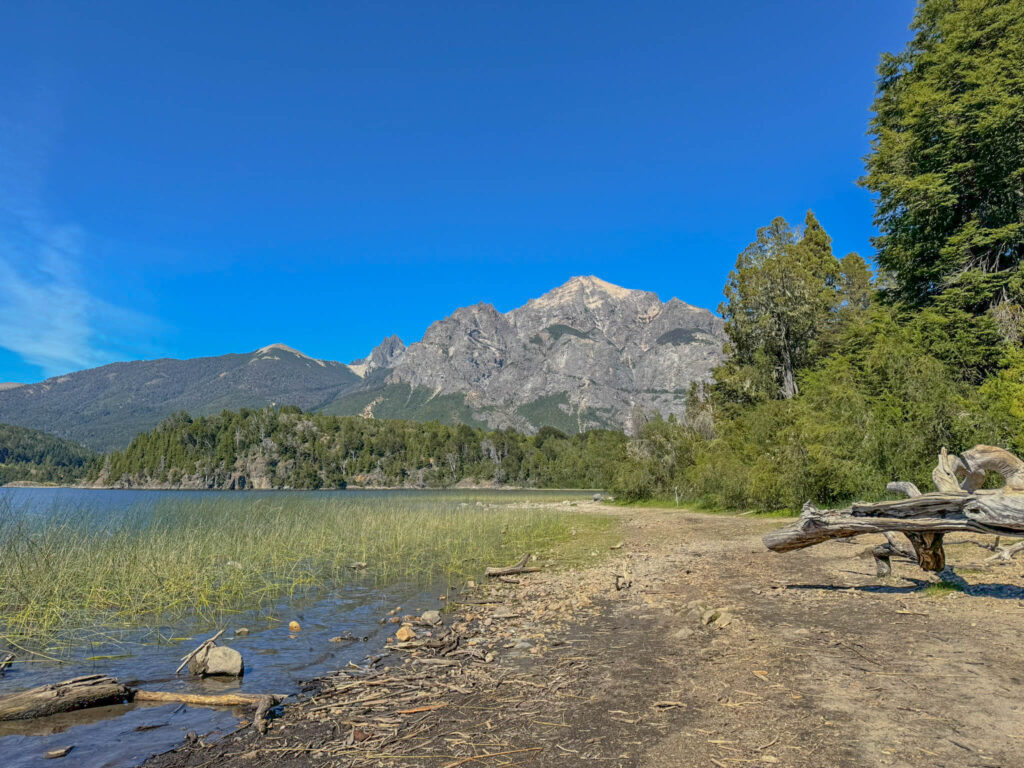
The Search for Andean Condors: A Visit to Estancia La Lucha – Cerro Las Buitreras
As a bird nerd, one of my goals was to see an Andean condor (Vultur gryphus) in the wild during my visit. Andean Condors are very large vultures, with the longest wingspan (3.2 meters or 10.5 feet) of any raptor. They also happen to the be the national bird of Bolivia, Chile, Colombia, and Ecuador. In Patagonia, Andean condors are considered to be symbols of power, liberty and health.
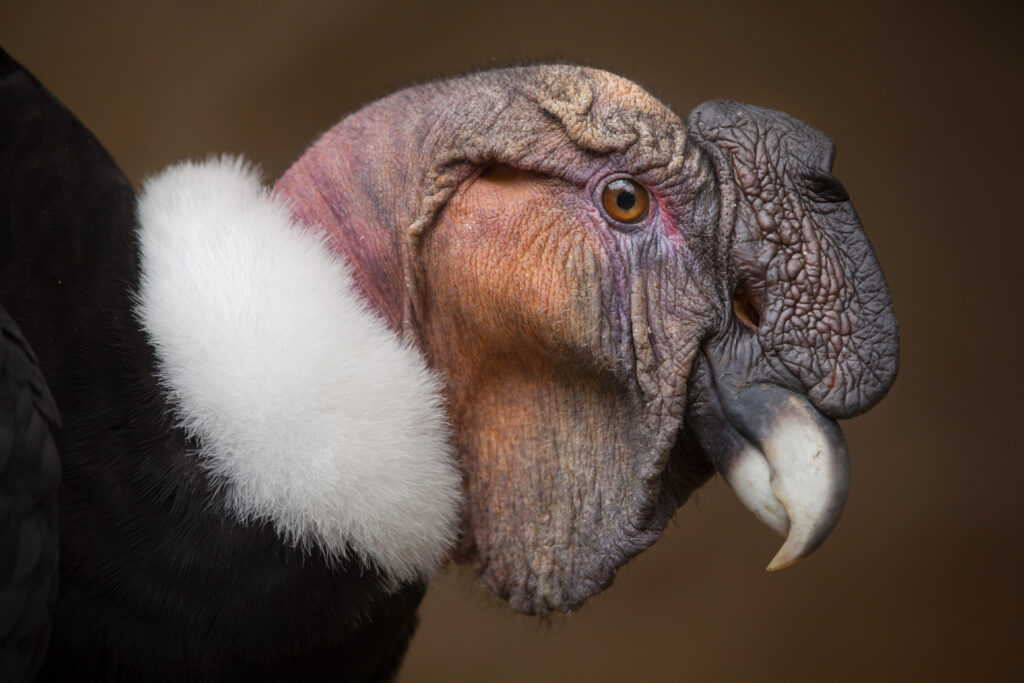
Argentina decided to pick a less glamorous bird, the rufous hornero (Furnarius rufus) or red ovenbird, as it’s national bird. Why the red ovenbird? Apparently, back in 1928, a survey of 40,000 students was conducted by a newspaper and the kids chose the red ovenbird as the national bird since it’s commonly found throughout the country and is often found near humans. Uruguay also selected the red ovenbird as its national bird.
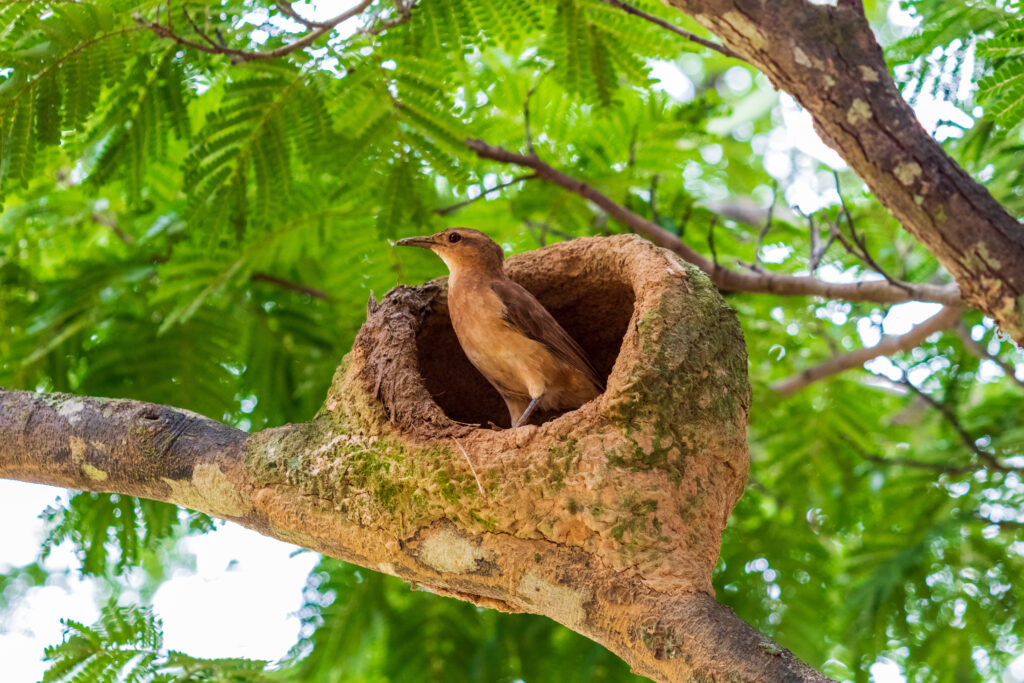
The Andean condor is classified as a “vulnerable” species, due to habitat loss and secondary poisoning from eating poisoned animal carcasses that are left behind by hunters. As a result, some zoos around the world attempt to breed Andean condors in human care. Even the ABQ BioPark Zoo (where I’m a volunteer Docent) in Albuquerque, New Mexico has a pair of Andean condors.
Ok, back to Bariloche. After doing some research, I found a place that was supposed to provide high odds of seeing the large vulture. I read about a place called “Estancia La Lucha – Cerro Las Buitreras ” where there was a good chance of seeing an Andean condor. Since “cerro” means hill, and “buitreras” means “vultures”, I was feeling optimistic. With their impressive stature, you’d think it would be relatively easy to spot one. The hard part was getting there.
The journey to Estancia La Lucha is about a 90-minute drive that takes you through Parque Nacional Nahuel Huapi. It’s a slow drive on a single lane road. One slow truck or car slows everybody down, which we had the pleasure of experiencing several times. There were no passing lanes, frequent radar areas to measure your speed, and lots of speed bumps. There seemed to be somewhat of an obsession with preventing speeding here.
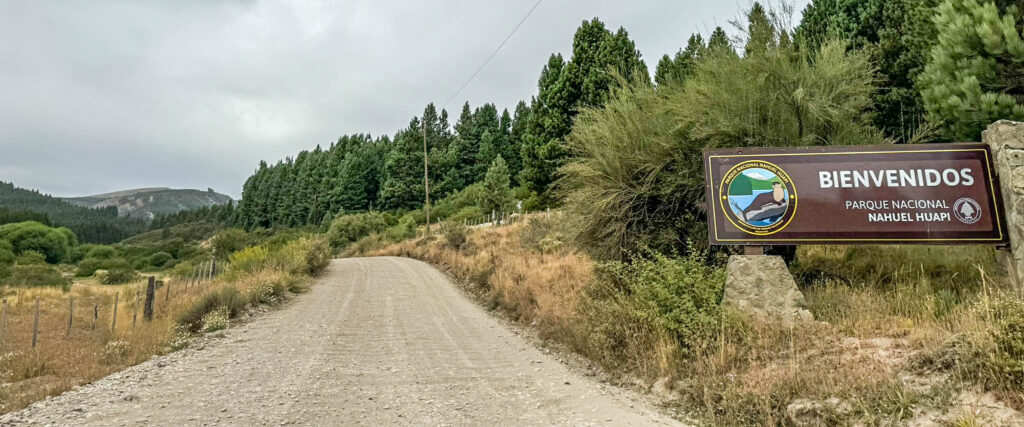
We finally turned off Hwy 40 onto an unmarked dirt road. There was no sign to indicate where it led to. We just relied on google maps and hoped for the best. After 30 minutes of driving on uneven dirt and rocks, we ended up in front of a river. We weren’t happy about that, as it didn’t look like our car would be able to pass through that river. Fortunately, I got out of the car and spotted a bridge further upstream, although it looked a bit sketchy.
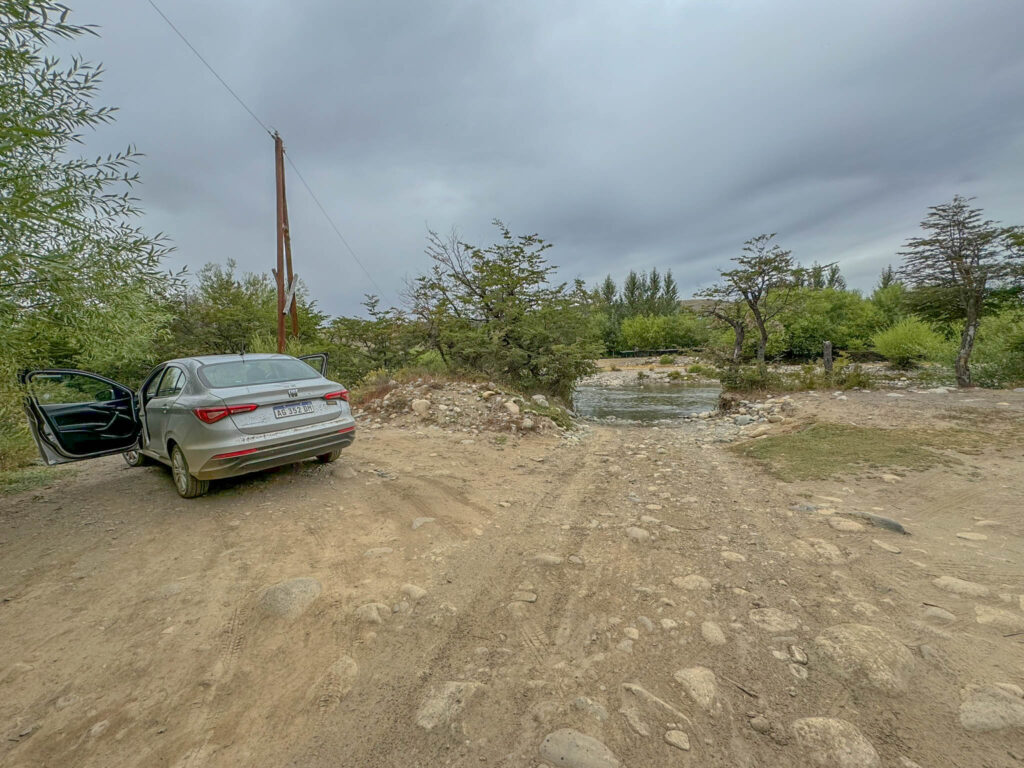
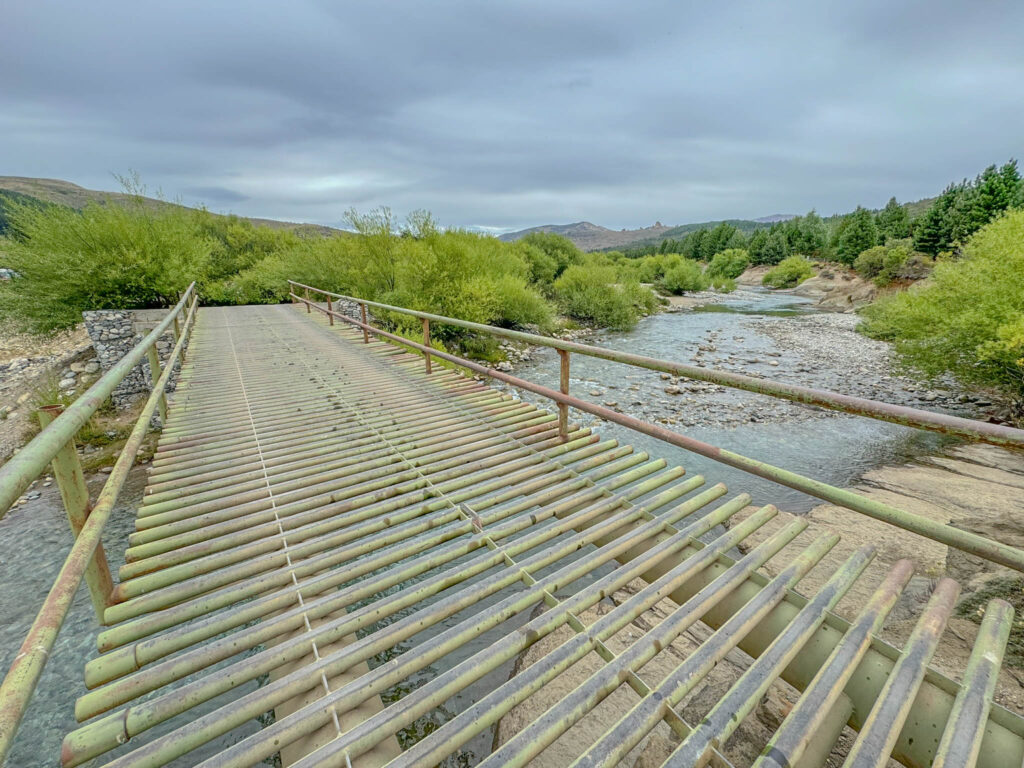
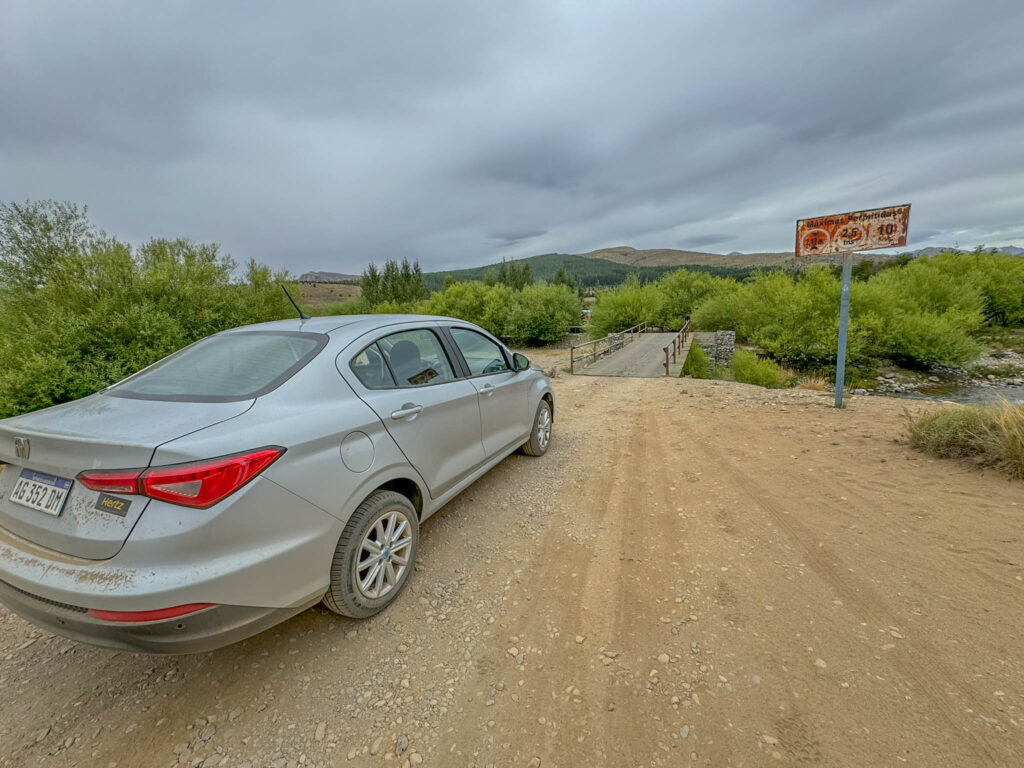
Fortunately, the bridge held and our car was able to cross the bridge.
After more dirt roads, we ended up at a gate that seemed to indicate private property and no trespassing. We had no cell phone receptions so we couldn’t use an online translator. My brother suggested we go through anyway, and that’s what we did. Thankfully.
A few minutes later, we came across a woman walking her dogs. We asked her where we might find Estancia La Lucha – Cerro Las Buitreras. She motioned for us to drive forward and park. Apparently, we were there.
We were greeted by two dogs with matted hair and one skittish dog. We went inside a rustic building and checked in. She asked for our passport numbers and told us that the cost was 5000 pesos each (10,000 pesos) in cash. We didn’t have pesos. Instead, we offered a US $10 bill, and she was ok with that.
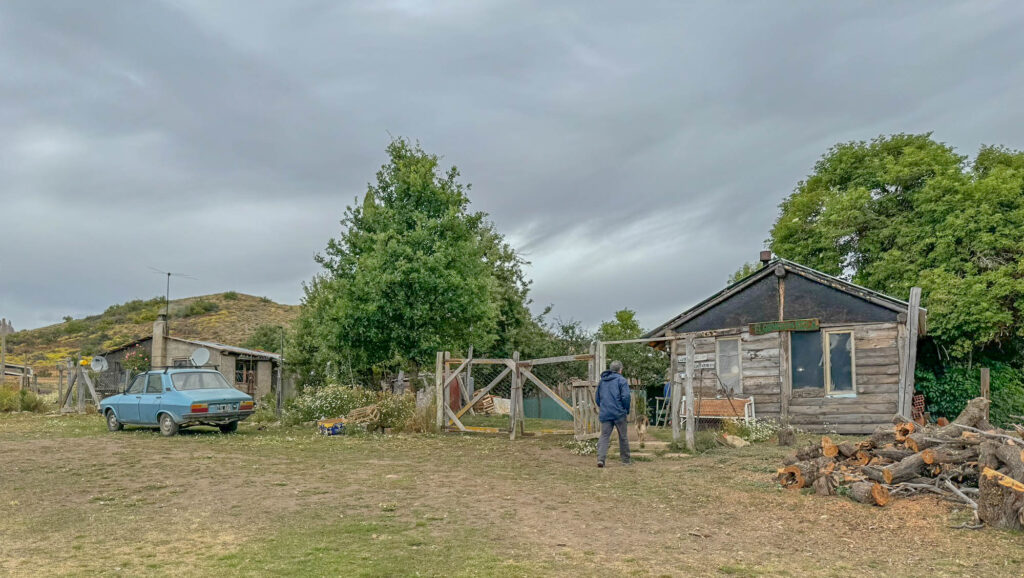
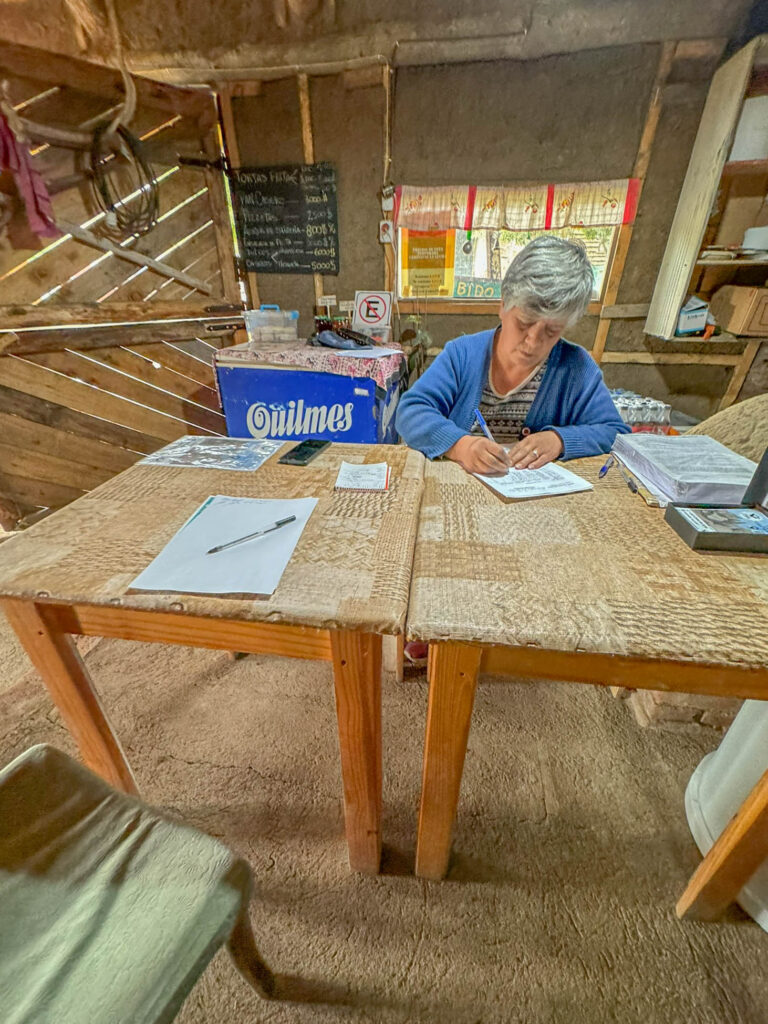
After registering and paying, she led us outside and stopped in front of a sign. She grabbed a long stick and used it to point to where we were allowed and not allowed to go. She provided lots of additional information, all in Spanish. I only understood a few words, so I was in smile-and-nod mode. But we got the gist of where we could go, and that was enough.
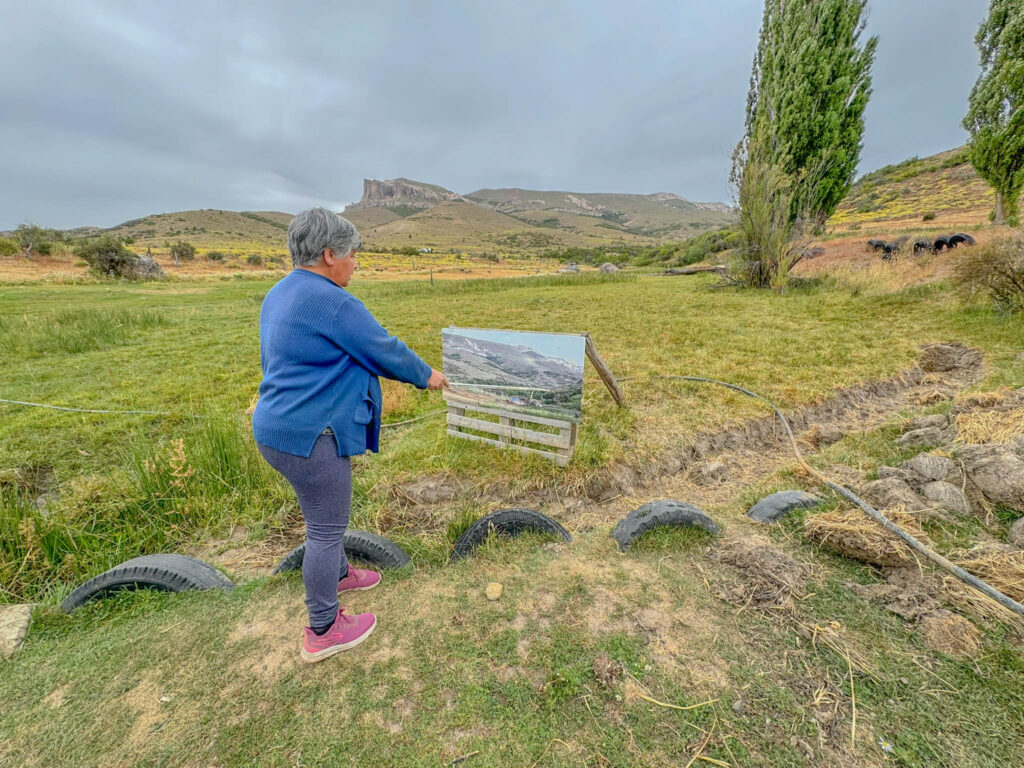
After that, we grabbed a bottle of water from the car and started hiking the trail.
It ended up being a 3-mile hike (round trip) and it was steep in some spots. We weren’t expecting a hike today as we were both still sore from the Torres del Paine climb. It turned out to be a nice hike with good views and interesting rock formations.
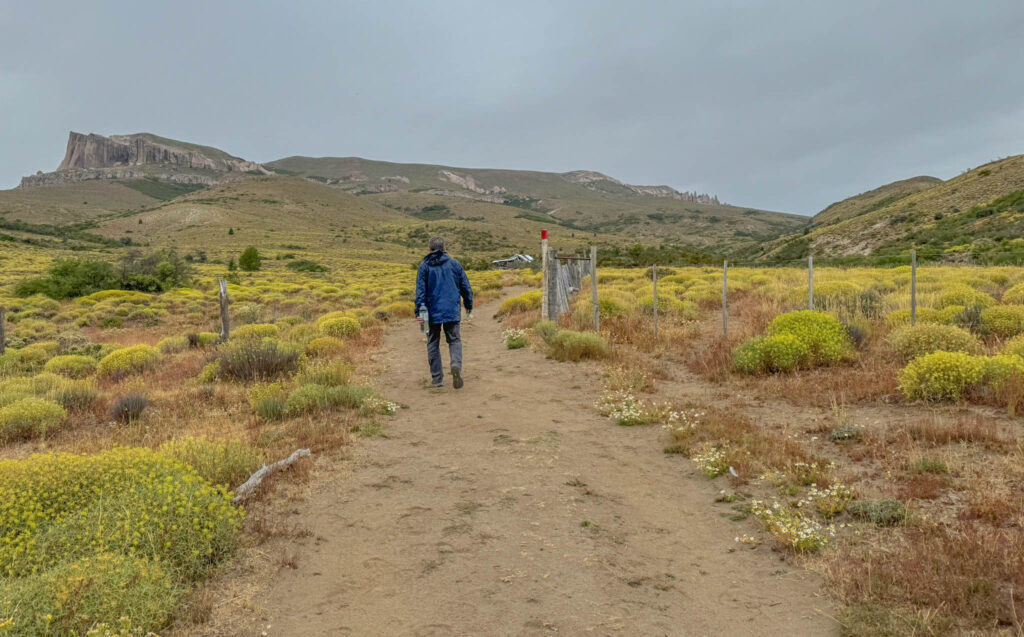
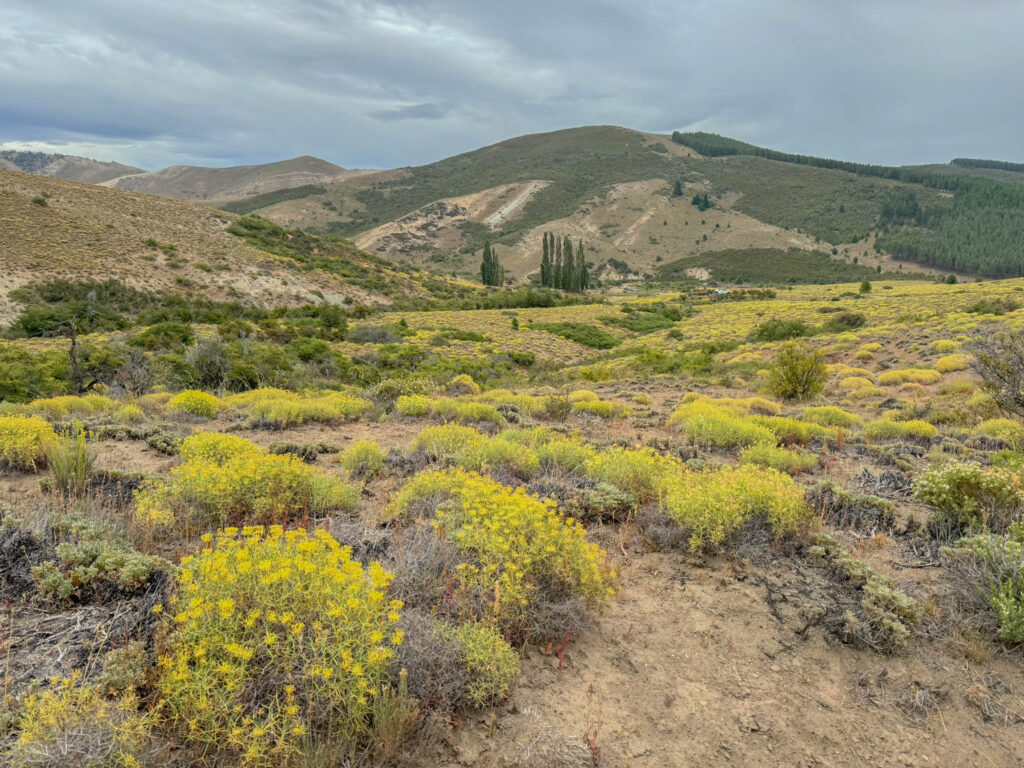
I paused to identify birds along the way, so my brother was far ahead of me. Suddenly, I heard him shouting my name and he was pointing up in the sky. It took a bit, but I spotted the Andean condor. It was very high up in the sky, and it only appeared as a black silhouette in my binoculars. But I was happy with that. By the time I got my phone out to take a photo, it was out of sight.
We continued to hike up the trail towards the prominent rock formations where the condors hang out, but we weren’t allowed to get close to the rocks. That’s one of the areas that was clearly off-limits based on the property owner’s pre-hike presentation.
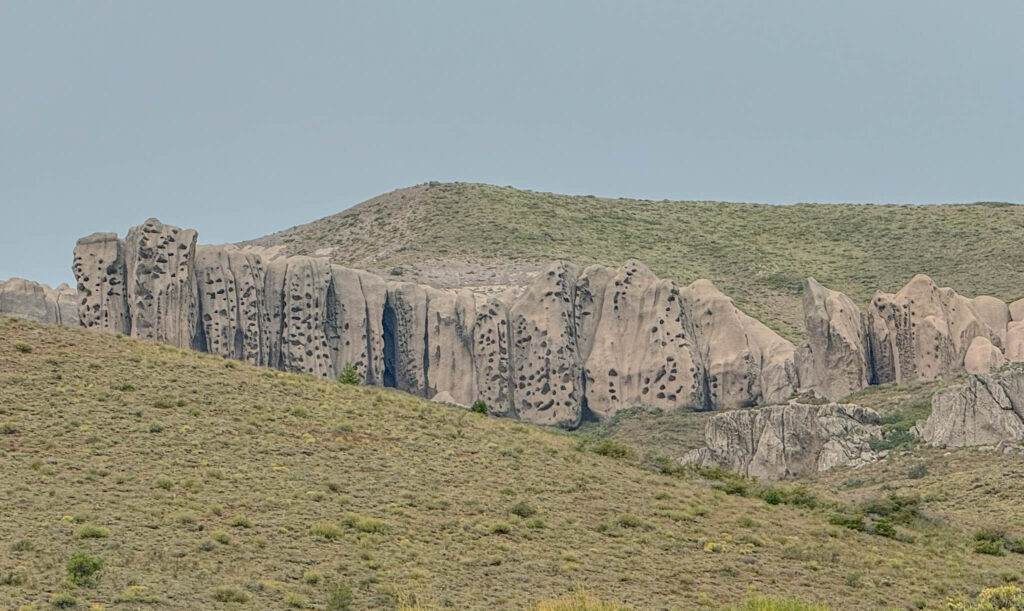
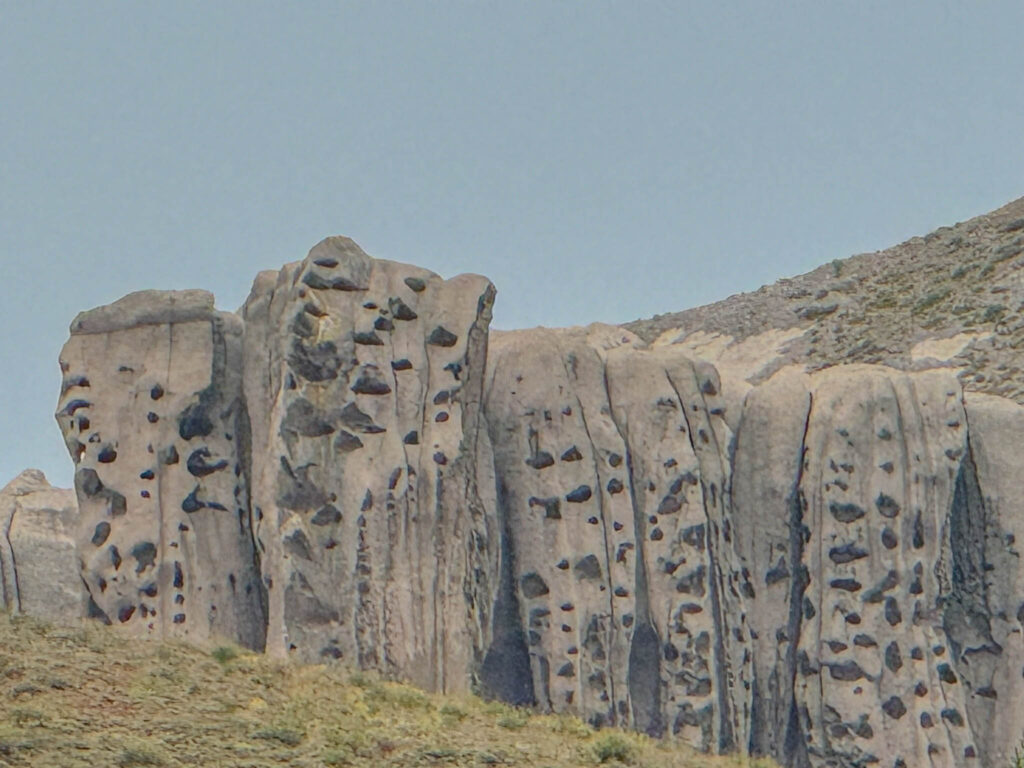
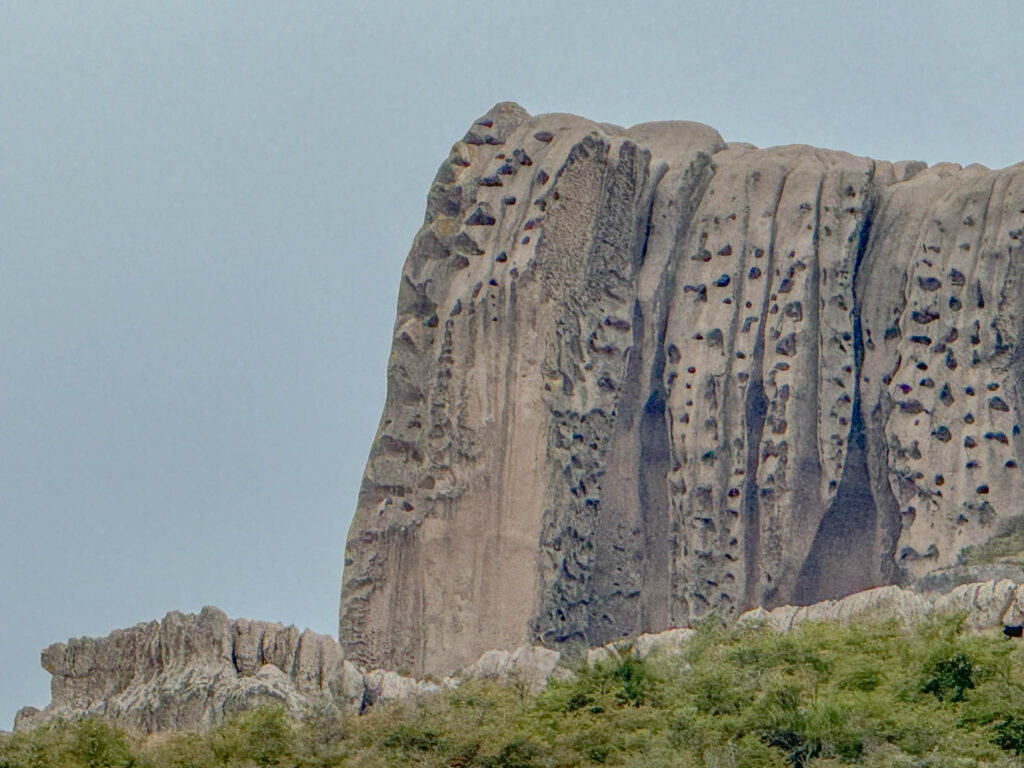
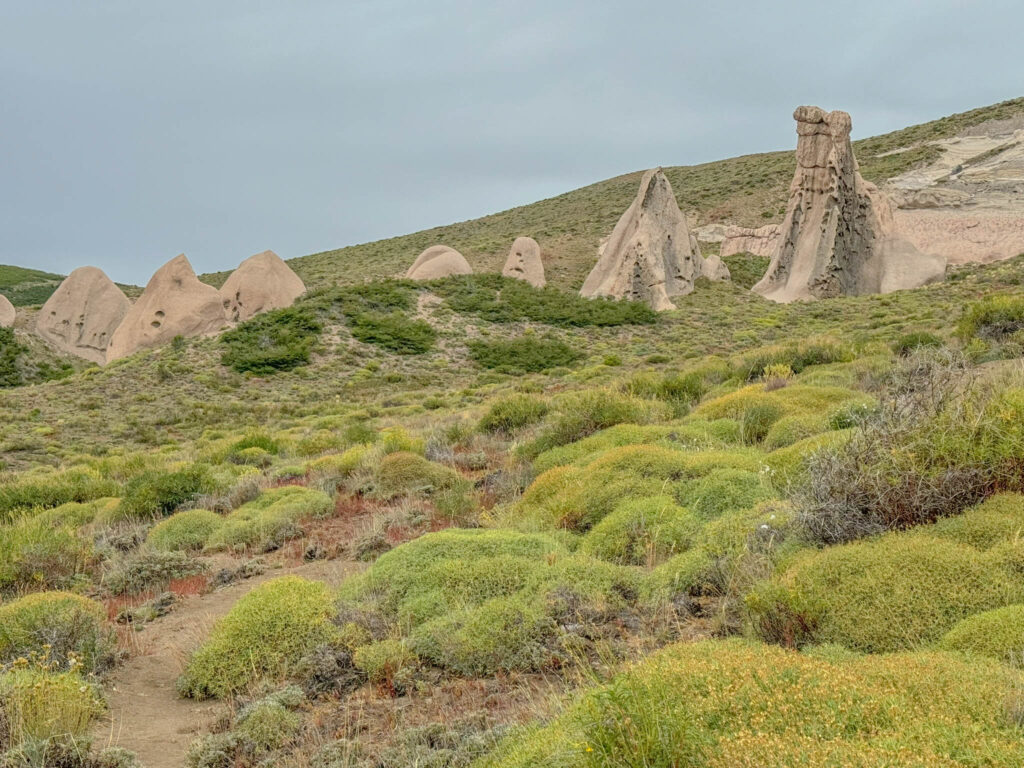
On the way back down, we spotted two Andean condors flying above the rocks. This time, I was able to snap a photo with my phone. Granted, it’s a lame photo, but I was happy to have some proof.
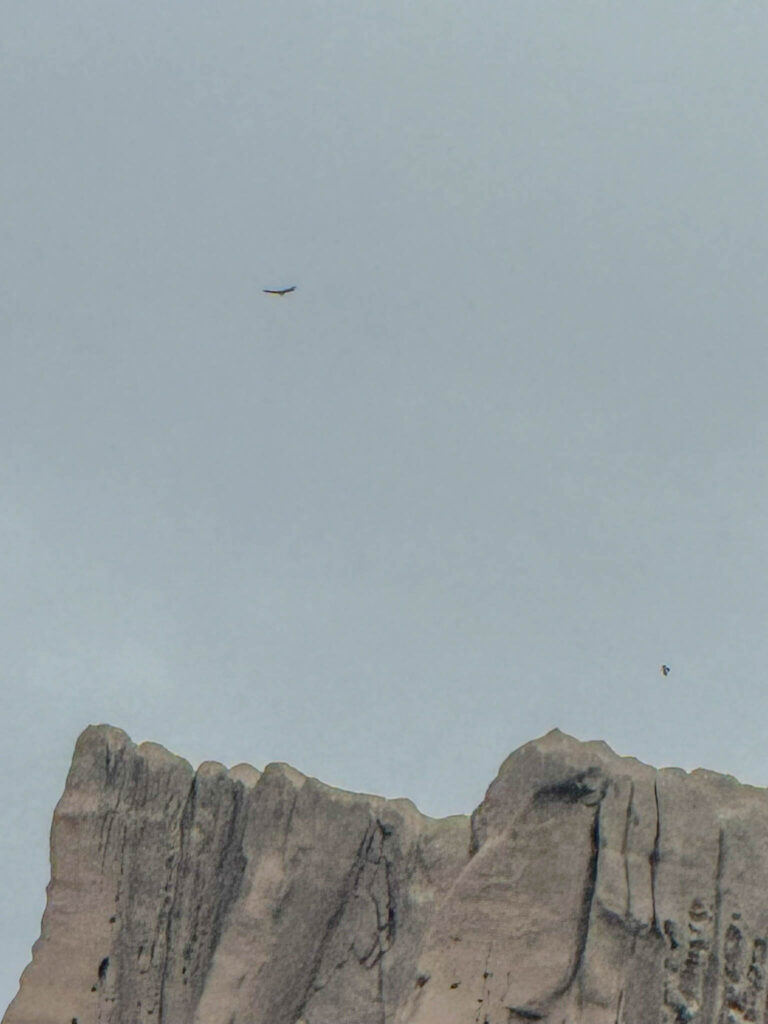
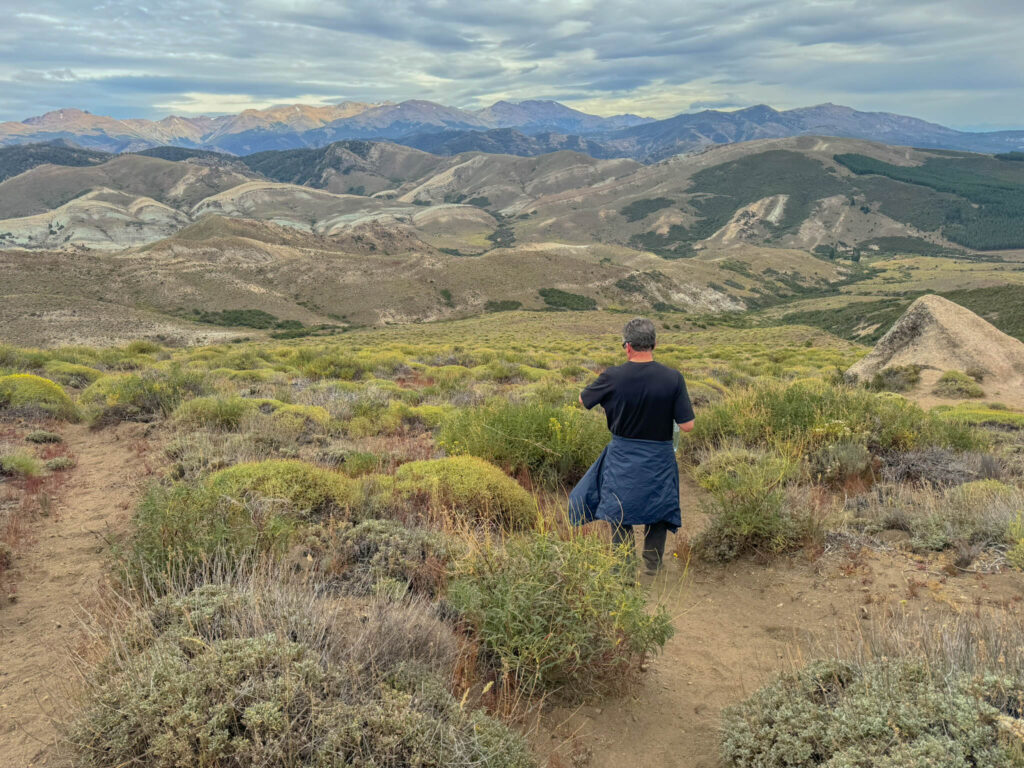
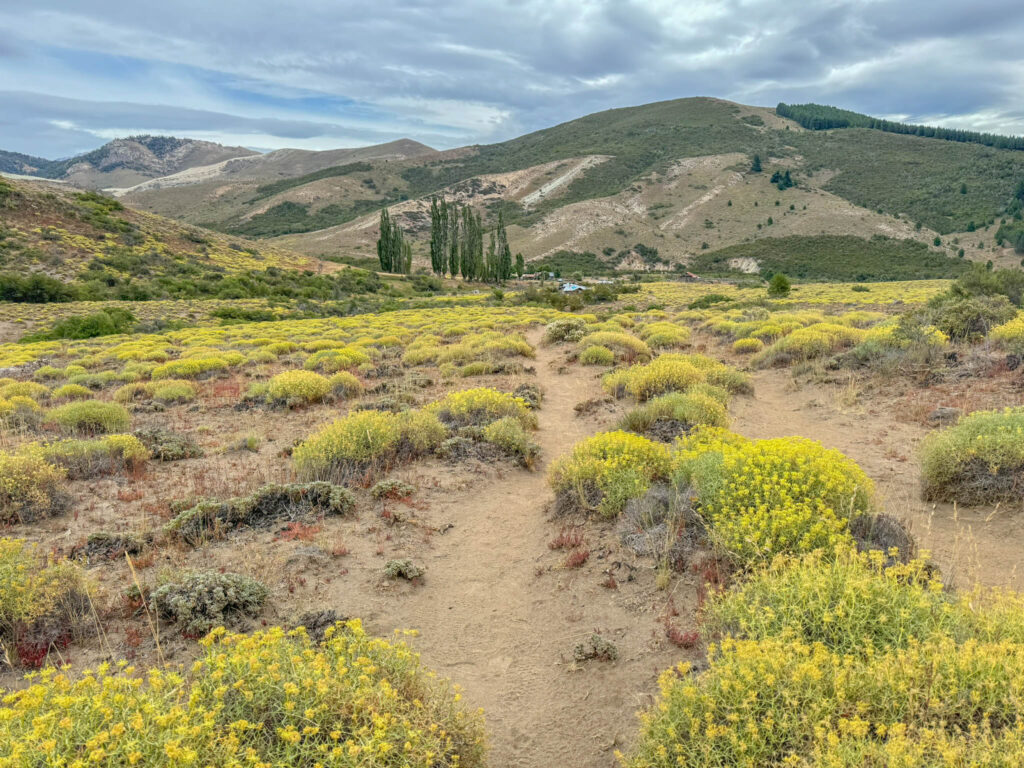
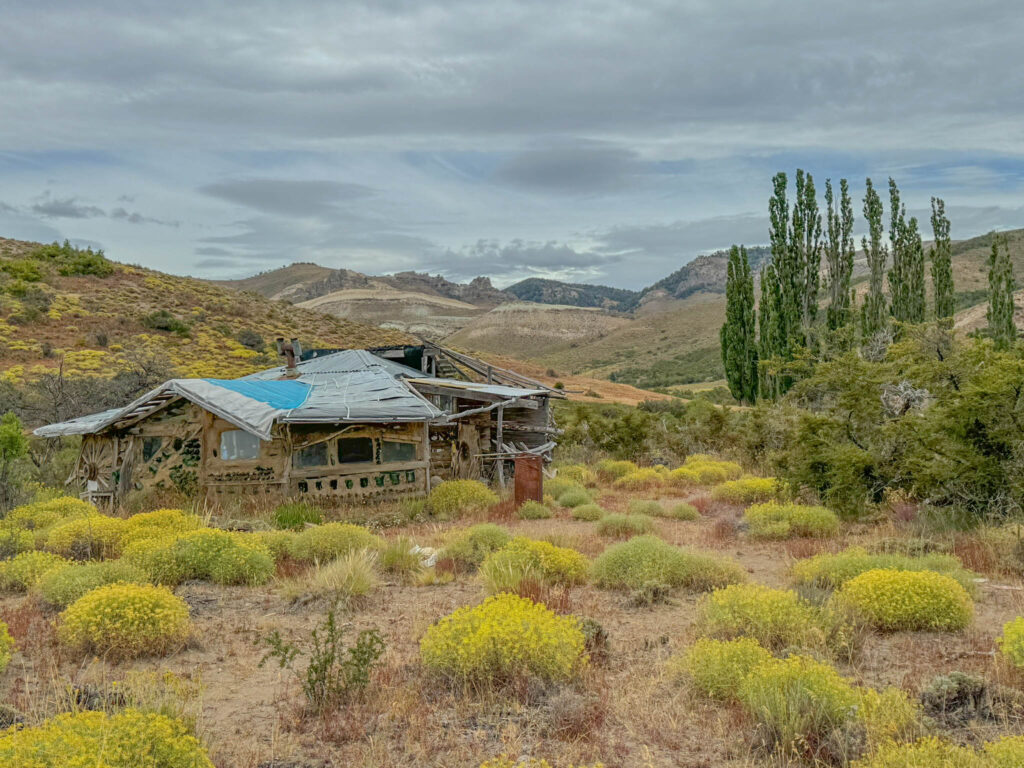
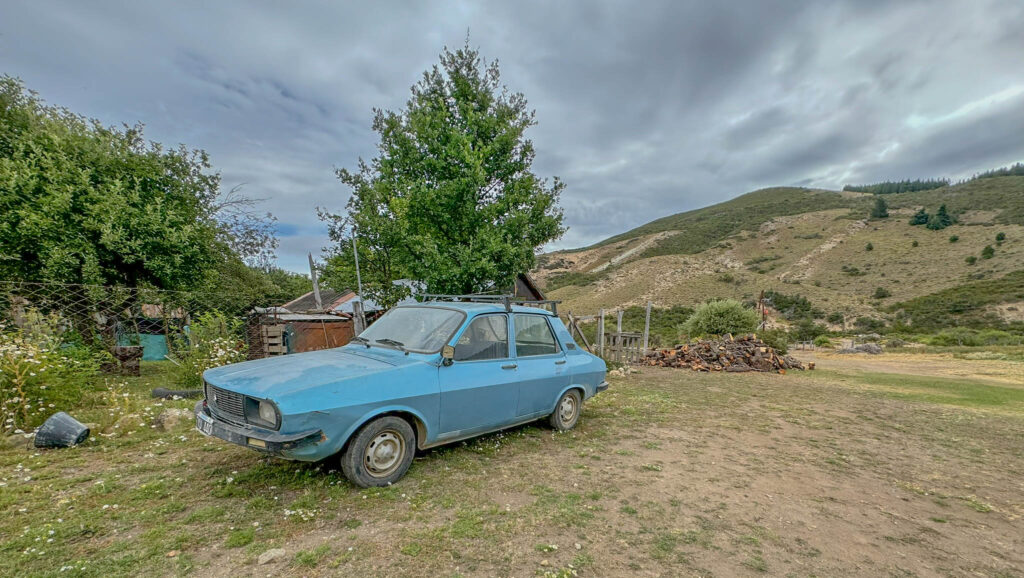

We saw about 15-20 other people on the trail that day. When you multiply that number by $5 per person, that’s not a lot of money, but apparently it pays the bills for the landowner.
Relax and enjoy the beautiful views
If all the activities I described leave you feeling tired, perhaps this activity will sound particularly appealing. Just relax and enjoy the spectacular views of Bariloche. We spent some time doing this and it was a nice change of pace. Of course, the weather may not always cooperate during your visit. We were very lucky to have great weather throughout our trip.
I spent some time writing, reading, and looking and listening for birds. Some of the common birds I spotted or heard from our AirBnb included white-crested Elaenia, chucao Tapaculo, Thorn-tailed Rayadito, Austral Thrush, Southern Lapwing, and a Tufted tit-tyrant. Those were all new birds for me, other than the Southern Lapwing.
No matter what you decide to do, with views like this, it’s hard to go wrong.
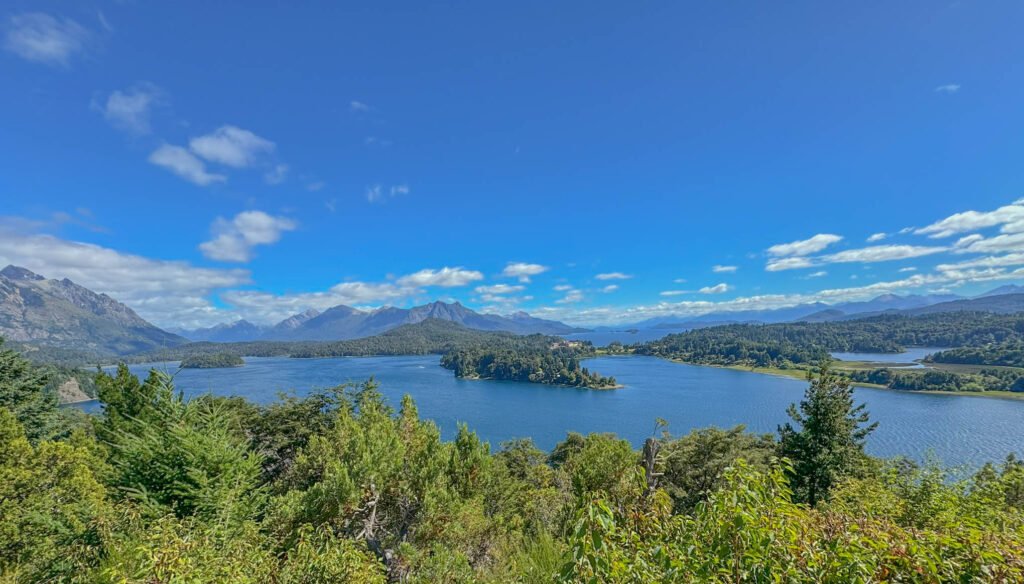
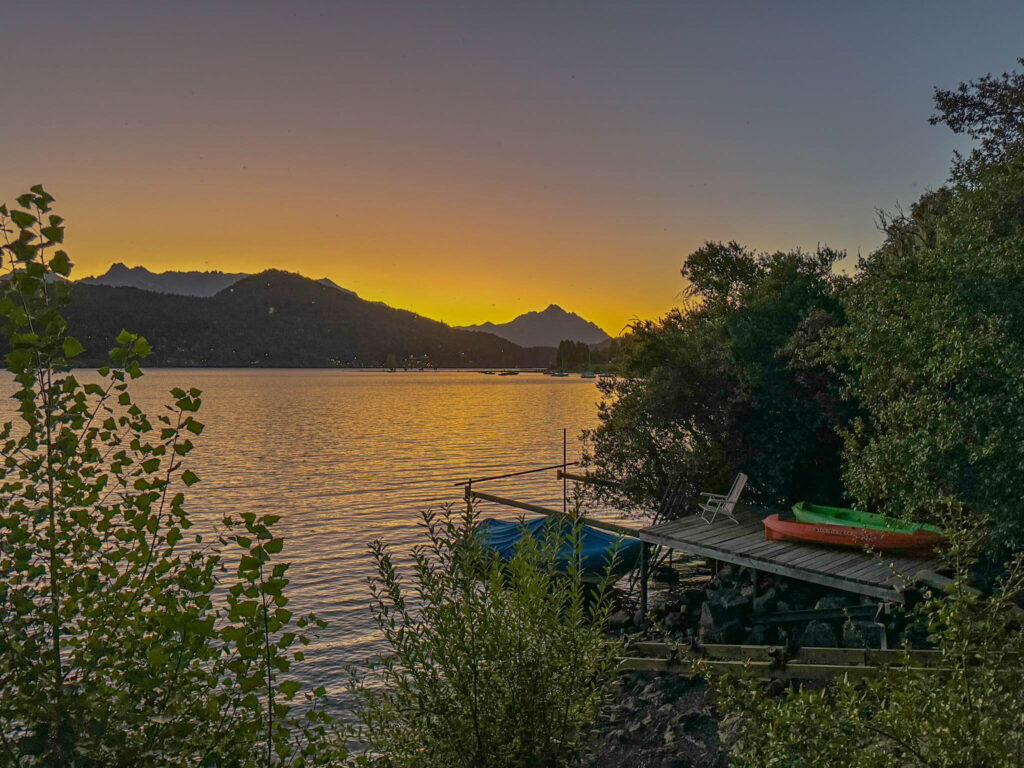
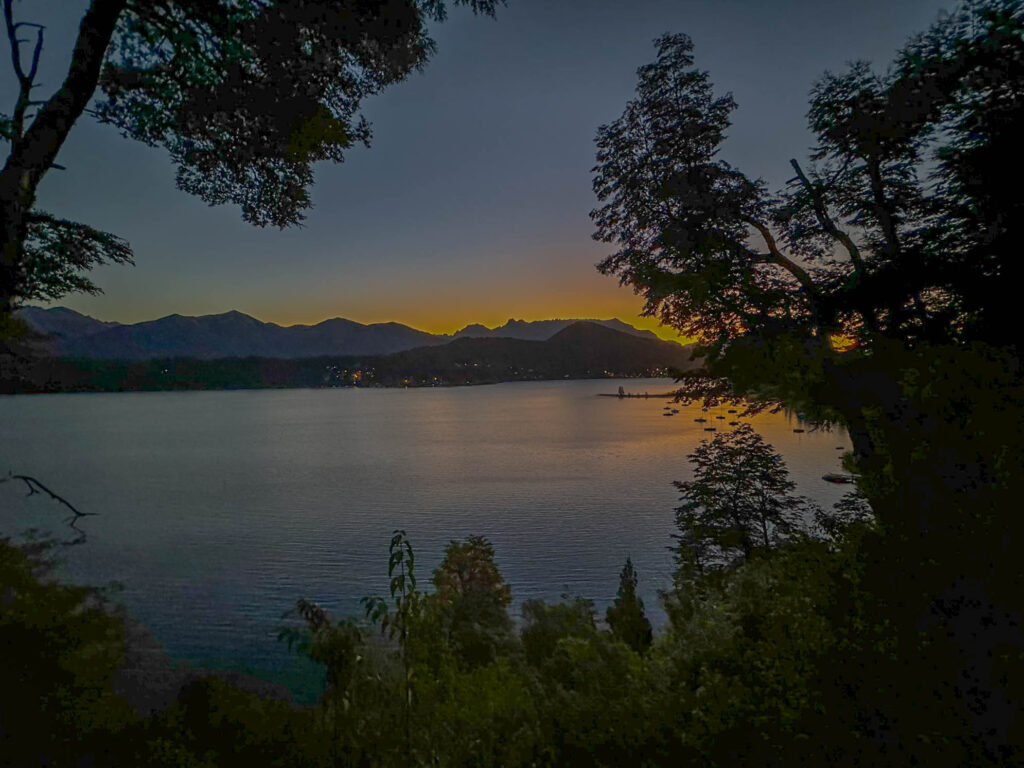
Thought for the Week
This week’s thought for the week is from Argentine Formula One racing driver, Juan Manuel Fangio (1911 – 1995). Fangio won the World Drivers’ Championship five times and he’s considered to be a pioneer of the sport.
“You need great passion, because everything you do with great pleasure, you do well.”
— Juan Manuel Fangio
Thanks for reading and happy travels!
Mark (The New Mexico Travel Guy)

Mark Aspelin, The New Mexico Travel Guy (www.newmexicotravelguy.com), is a travel writer and author of two books who has enjoyed a wide variety of adventures in his travels to over 100 countries and all 50 U.S. States. His current project involves visiting EVERY town in his home state of New Mexico (there’s over 500 towns) and writing a story about each one. He’s on track to finish the project by his early-mid 100s. When not traveling, Mark lives as a recluse in the mountains outside of Albuquerque, New Mexico.
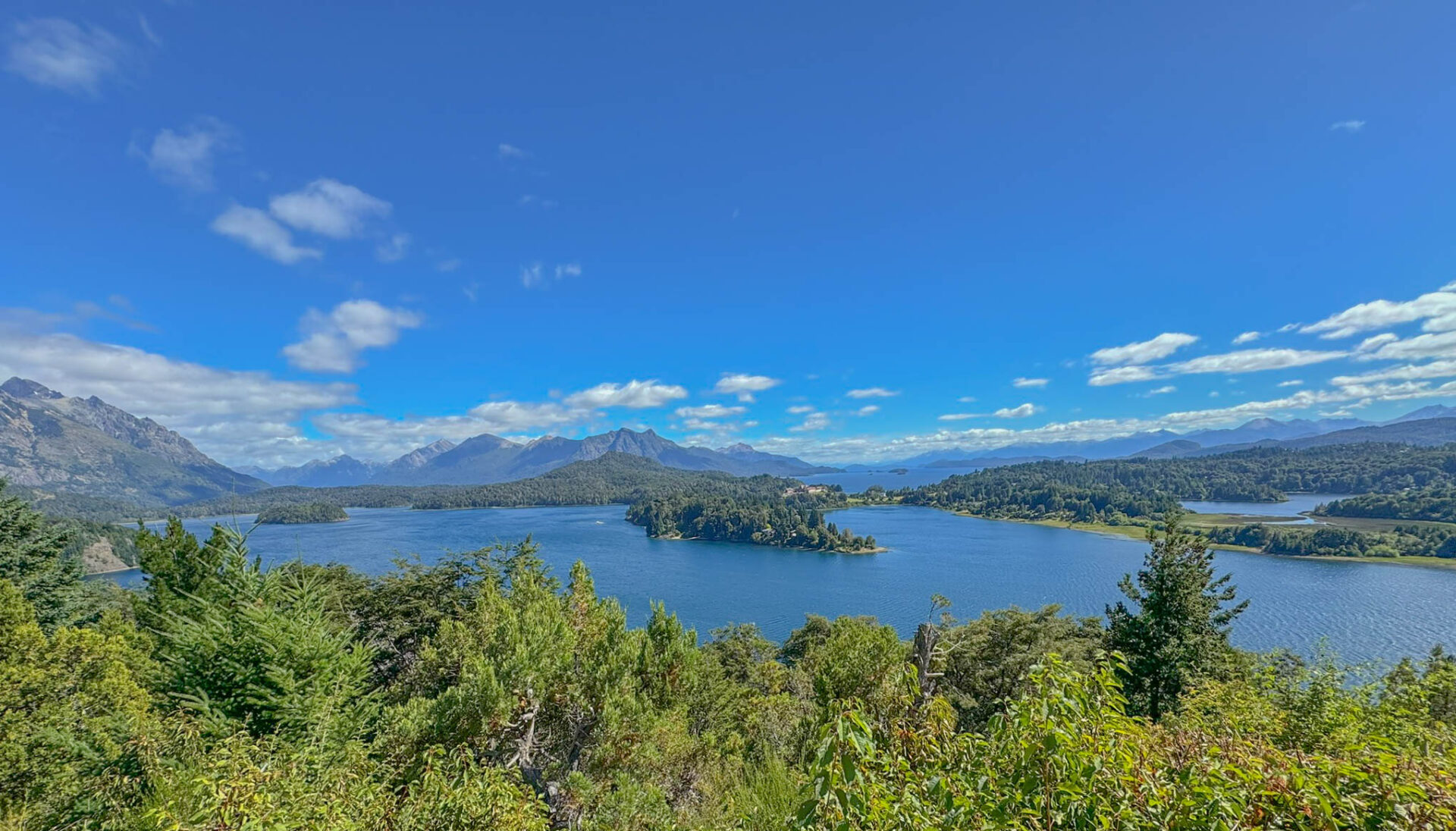
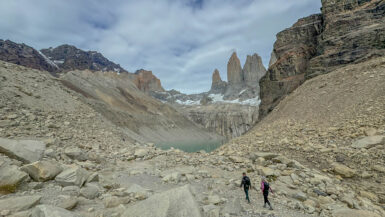
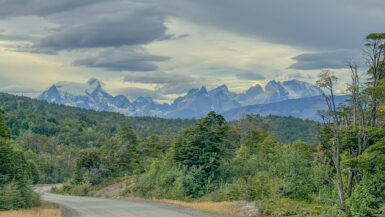
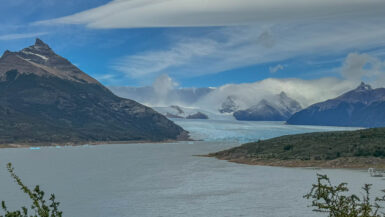
Leave a reply